6 Kinds of Shell and mother of pearl looks like Pearls
Guides of conch, melo, and abalone pearls and Tridacna, Quahog, Nautilus pearl
Giriş:
Dive into the world of exotic organic gems with our comprehensive guide featuring conch, melo, and abalone pearls. These unique, non-nacreous pearls offer a distinct charm and luster, making them sought-after by jewelry connoisseurs. Discover the captivating history, cultural significance, and gemological characteristics of these pearls, including their formation, color variations, and structural features. Learn about the queen conch’s pink hues, melo pearls’ flame-like structures, and abalone pearls’ rich iridescence. This guide is a must-read for jewelry stores, studios, brands, retailers, designers, e-commerce sellers, drop shippers, and celebrities looking to incorporate these natural wonders into their collections or custom-made pieces. Uncover the secrets of these precious ocean gems and elevate your jewelry game with our in-depth insights.
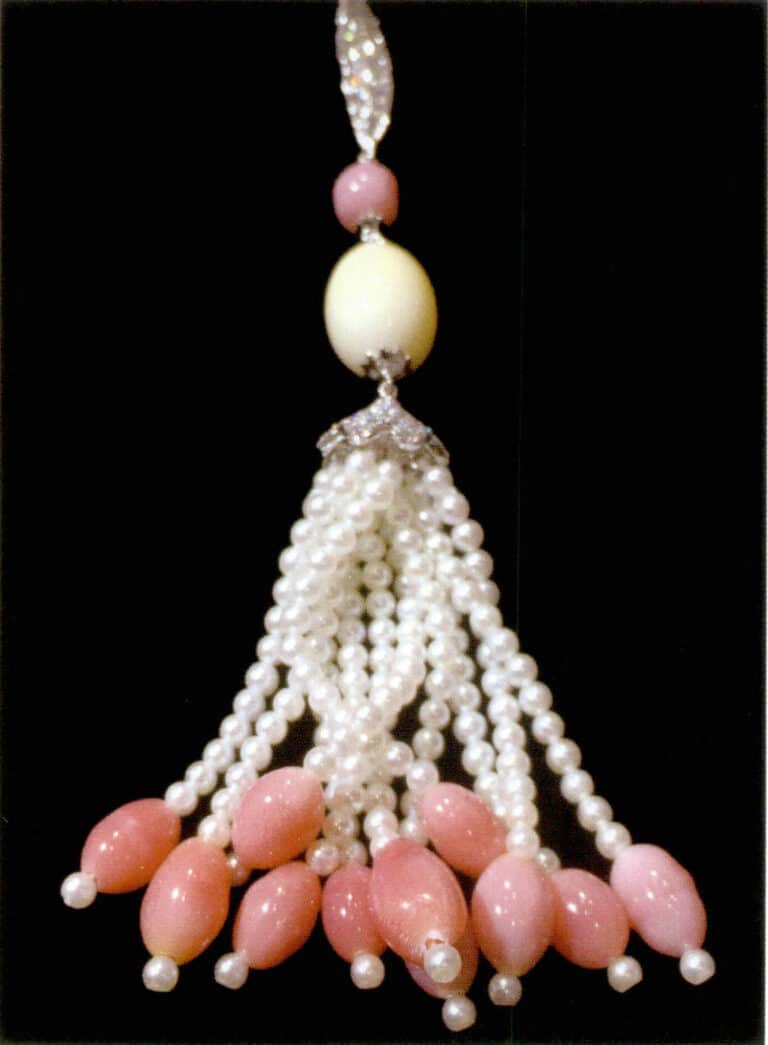
İçindekiler
Section Ⅰ Pearls without a pearl layer
In addition to the pearls produced by bivalve mollusks in seawater and freshwater mussels with a pearl layer, other bivalve mollusks and gastropods can also make “pearls.” However, since the vast majority of these materials do not have a pearl layer (non-nacreous), they are referred to as “pearls” in the international gem community and generally need to be enclosed in quotation marks to distinguish them from the pearls with a pearl layer produced by shells and mussels mentioned in the previous chapter. Standard classifications of pearls and their mother shells are shown in Figure 2-0-1, with pearls that have a pearl layer and those that are not shown in Figures 2-0-2 and 2-0-3.


Figure 2-0-2 Pearls with a nacre layer and "pearls" without a nacre layer (1)

Figure 2-0-3 Pearls with a nacre layer and "pearls" without a nacre layer (2)
Gastropods are an essential component of the phylum Mollusca and are the largest class. Gastropods have a developed head and a thick, broad foot on the ventral side, hence the name; the body has a twisted internal organ, resulting in asymmetry. They may have a shell or be shell-less. Most species in the class Gastropoda possess a spiral-shaped “shell” when threatened; they can retract their soft bodies into the shell. The leading producers of “pearls” are marine snails, including the conch, the apple snail, the abalone, and the nautilus.
Other bivalve mollusks, such as clams and round clams, can also produce “pearls” without a pearl layer.
1. Conch "pearl"
Conch “pearl” / (Conk “pearl”), also known as King Queen “pearl”, is produced by the Queen conch mollusk (Strombus gigas). Conch “pearls” have a very charming pink color and possess a characteristic silky luster or porcelain-like sheen, as well as a distinct “flame structure” see Figures 2-1-1 to 2-1-4.
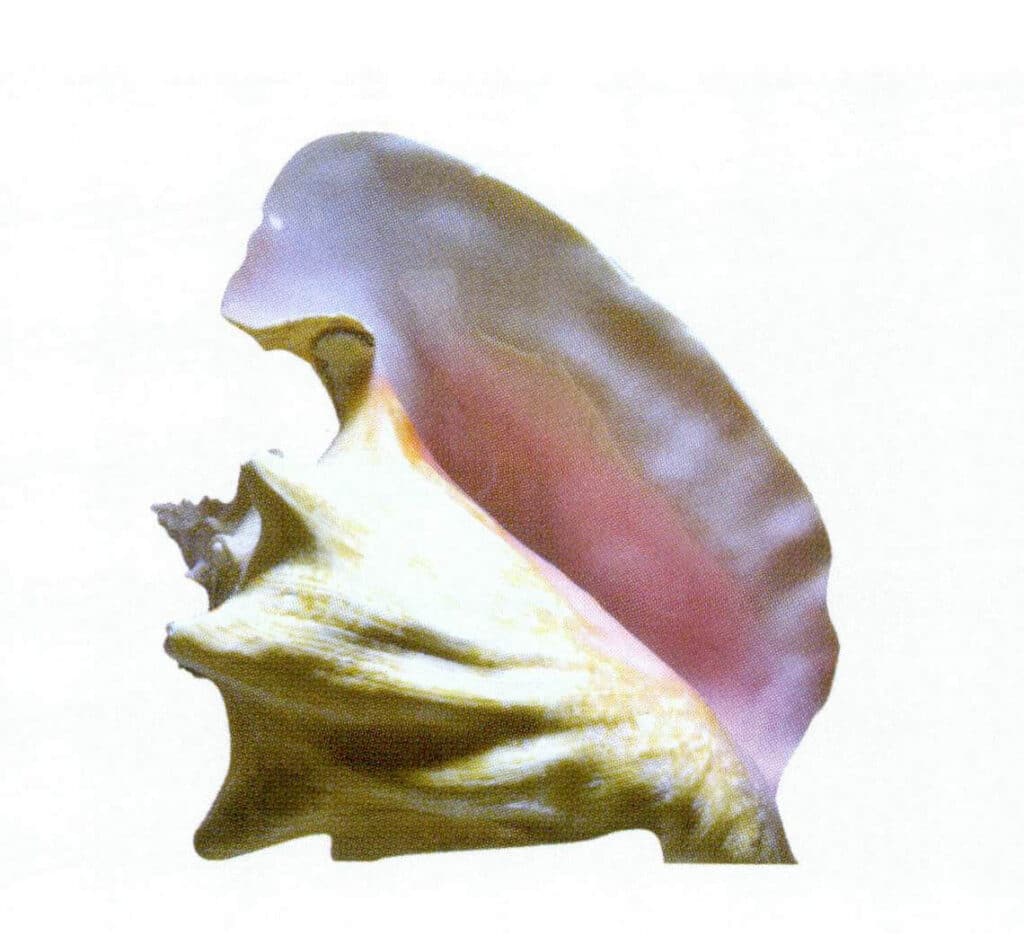
Figure 2-1-1 Queen conch
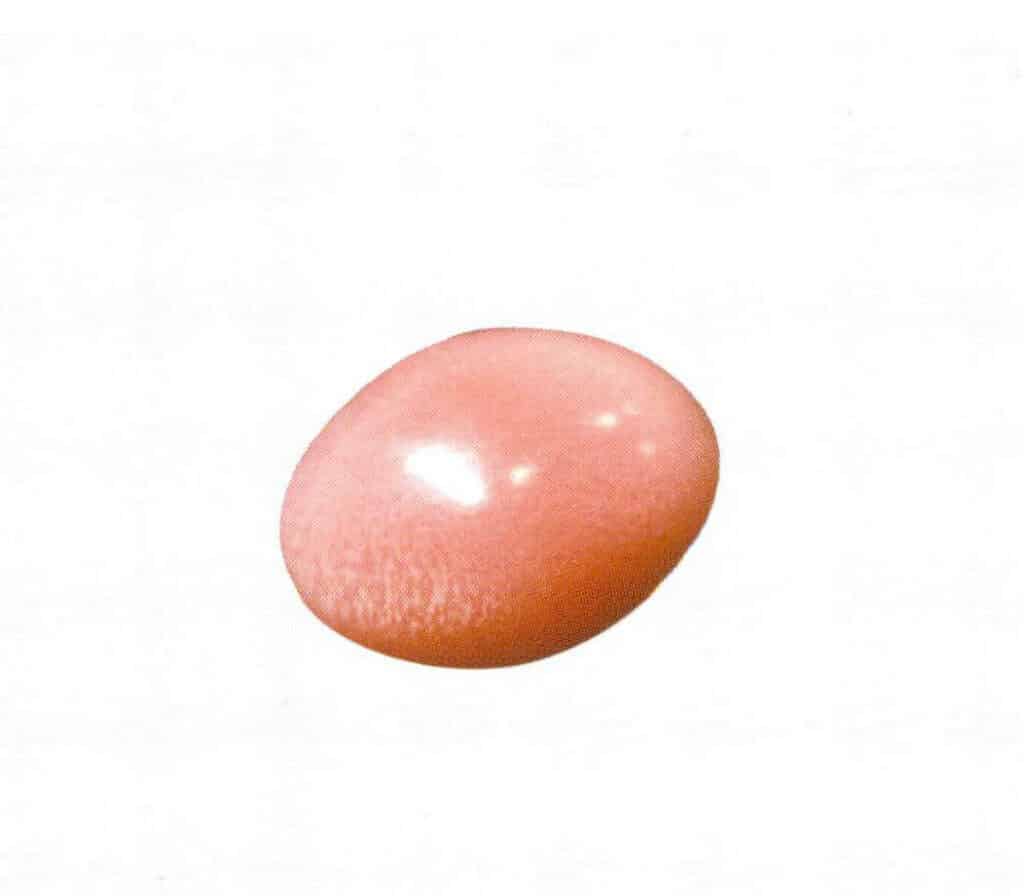
Figure 2-1-2 Conch "Pearl" (I)
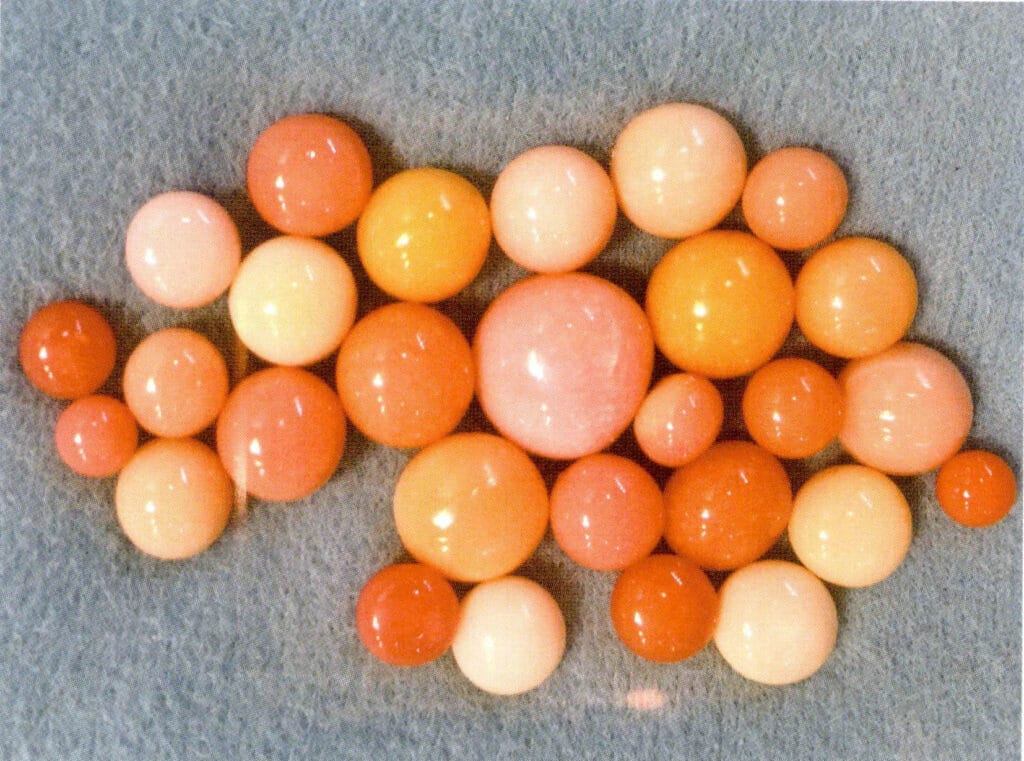
Figure 2-1-3 Conch "Pearl" (II)

Figure 2-1-4 Conch "Pearl" (III)
1.1 Uygulama Tarihi ve Kültürü
The shell of the giant conch was used as a ceremonial instrument by some pre-Columbian civilizations, but there are no historical records of the conch “pearl” being used as jewelry before the mid-19th century. It was not until the gem book of 1839 that the conch “pearl” was recorded.
Initially, people used the shells of the conch to make jewelry. Because of the beauty and rarity of conch “pearls,” they were initially only used in the jewelry of European royal queens, thus earning the title of “queen’s pearls.”
In the late 19th century, jewelry designers began recognizing the beautifying solid effect of the delicate and vivid pink tones of conch “pearls” on platinum jewelry. By the early 20th century, conch “pearls” were gradually and elegantly integrated into works with natural creativity. After World War I, public interest in conch “pearls” significantly decreased; it wasn’t until the 1980s that they regained the attention of designers. With the promotion, Japan became the first market with significant consumer awareness of conch “pearls.”
People mainly seek conchs not to obtain conch “pearls” but for the conch meat. Conch “pearls” are often discovered during the cleaning and processing of conch meat, merely an accidental byproduct of the industry. The meat of the conch is tender and delicious, highly favored by gourmet enthusiasts. The actual usage of fresh, frozen, or dried conch meat can reach several tons annually.
1.2 Gemological Characteristics
The basic properties of conch “pearls” are shown in Table 2-1-1.
Table 2-1-1 Conch “Pearl” Basic Properties
| Ana Bileşen Mineraller | Calcium carbonate, shell protein, etc. | |
|---|---|---|
| Şekil | From symmetrical spherical and oval shapes to various irregular forms, circular shapes are rare. | |
| Yüzey özellikleri | Often presents visible features of "flame structure," see Figure 2-1-5 and Figure 2-1-6. | |
| Internal structure | Concentric ring structure | |
| Optik özellikler | Parlaklık | Silky luster or porcelain-like luster of the features |
| Renk | White, light yellow, light orange, brown, pink, etc., see Figures 2-1-7 and 2-1-8; the most common is pink, which will fade when exposed to sunlight for a long time | |
| Kırılma indisi | 1.50 ~ 1.53 , commonly 1.51 | |
| Mekanik özellikler | Mohs sertliği | 4 ~ 6 Generally; related to color, the hardness of pink is 5 ~ 6 |
| Sertlik | High, possibly higher than pearl | |
| Bağıl yoğunluk | Brown: 2.18 ~ 2.77; Light yellow: 2.82 ~ 2.86; Pink: 2.84 ~ 2.87 | |
| Raman spektroskopisi | Mainly consists of the peaks of calcite and organic pigments, see Figure 2-1-9 | |

Figure 2-1-5 Flame-like structure of the “pearl” of a conch (1)
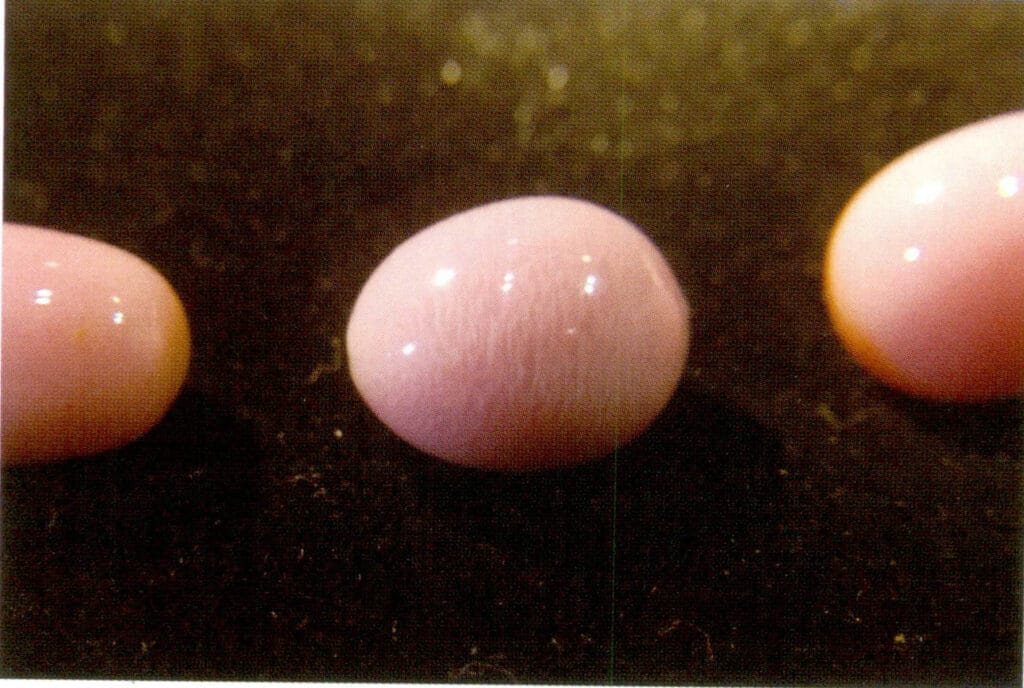
Figure 2-1-6 Flame-like structure of the “pearl” of a conch (2)
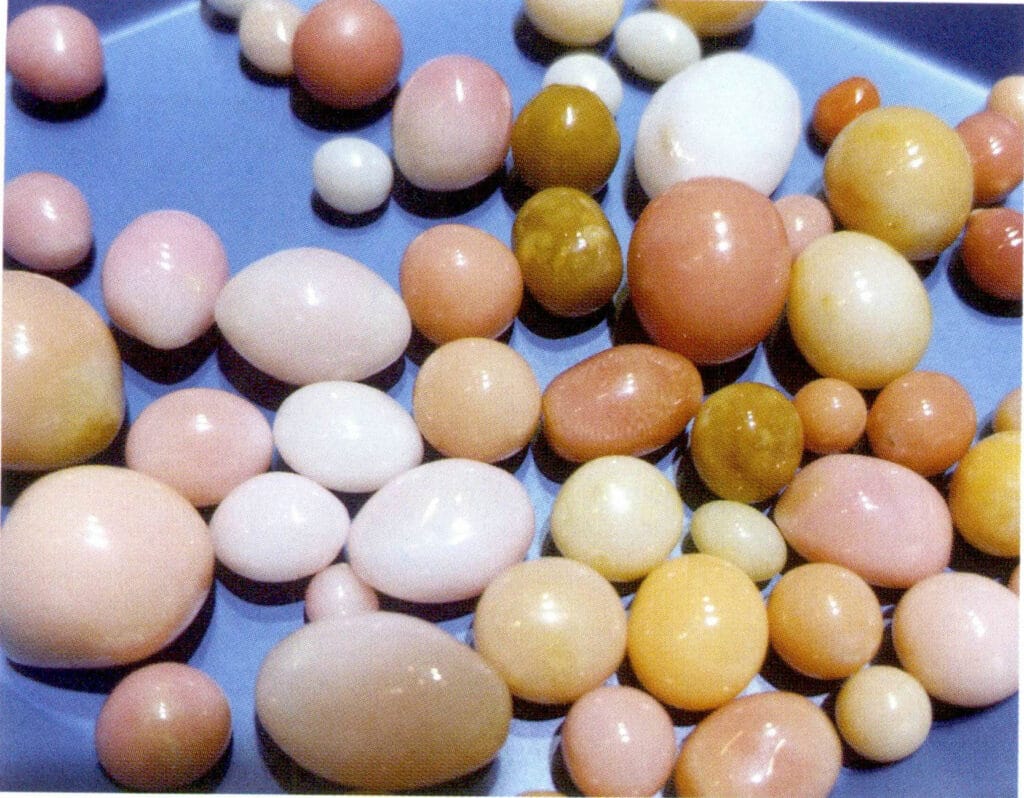
Figure 2-1-7 Different colored sea snail "pearls" (1)
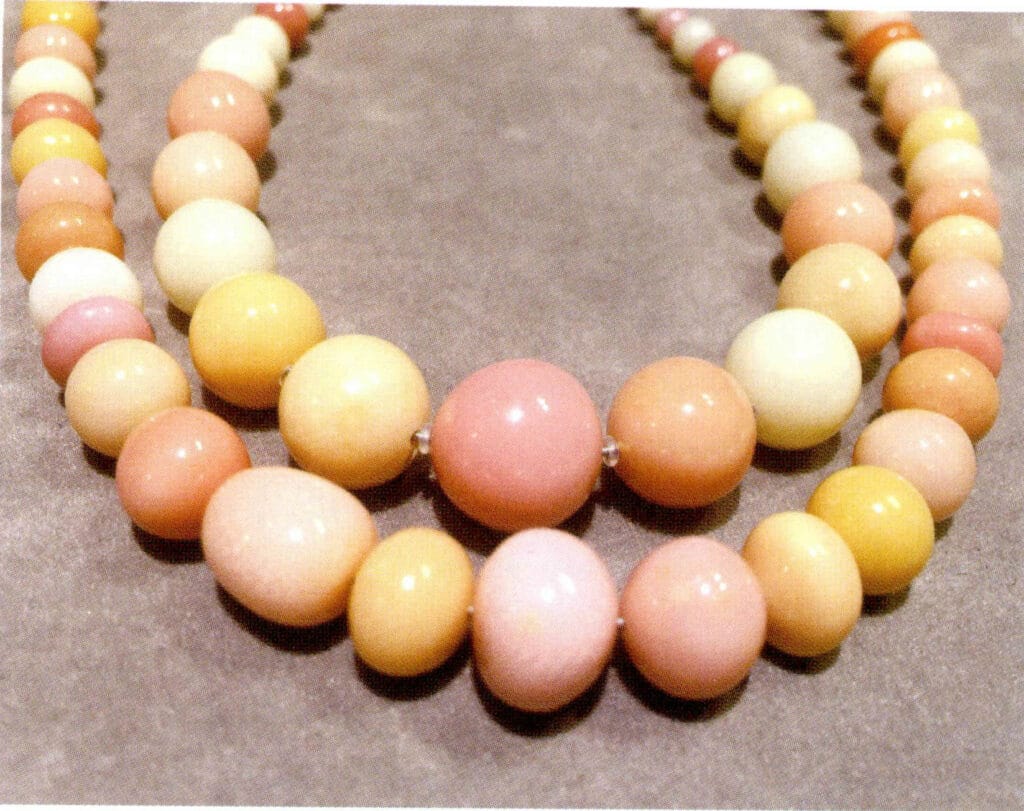
Figure 2-1-8 Different colored sea snail "pearls" (2)
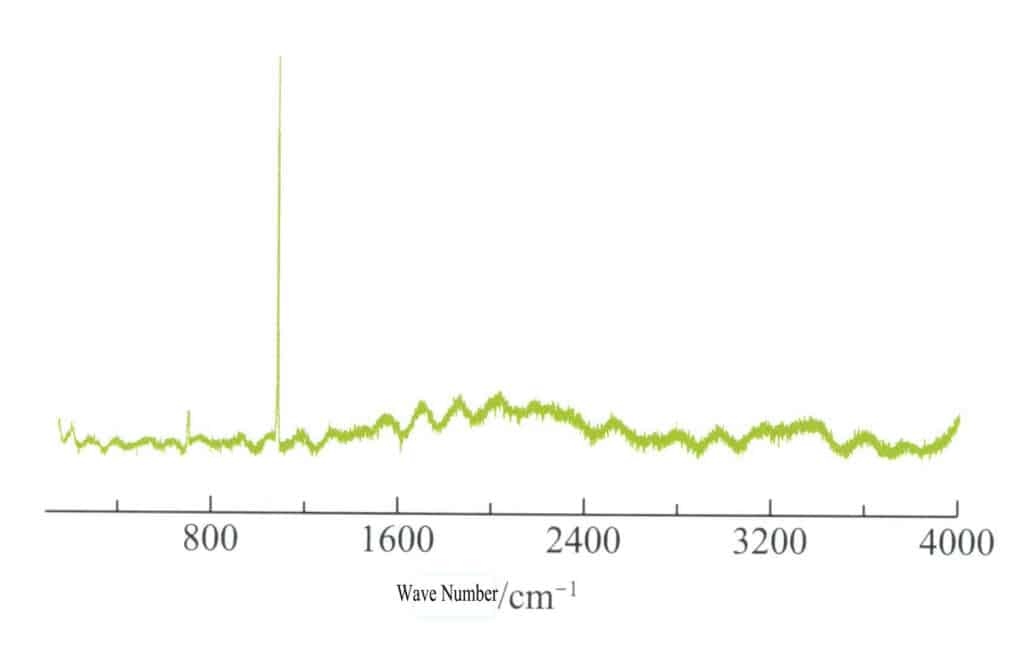
1.3 Gemstones with Similar Appearance and Identification
Besides orange coral beads, sea snail “pearls” are rarely confused with other gemstones. Identification with orange and pink coral beads can be found in Table 2-1-2.
Table 2-1-2 Identification of sea snail “pearls” and their similar items
| Gem varieties | Renk | Parlaklık | Yüzey özellikleri | Bağıl yoğunluk |
|---|---|---|---|---|
| Conk pearl | Orange, pink | Silky luster | Flame-like structure | 2.85 |
| Orange Pink Coral Beads | Orange, Pink | Mumsu Parlaklık | Surface Pits, Wavy Stripes | 2.65 |
1.4 Origin
Natural “pearls” from conchs are only found in the Caribbean, the Bahamas, and the Bermuda Islands.
1.5 Fishing
The queen conch mollusk can grow up to 30 cm in length, weigh about 3 kg, and have a lifespan of around 25 years. See Figures 2-1-10 and 2-1-11. A female conch can lay eggs nine times in one breeding season, but only a tiny percentage of the larvae can survive, and Some of the larvae are also preyed upon by other marine animals such as fish and sea turtles.
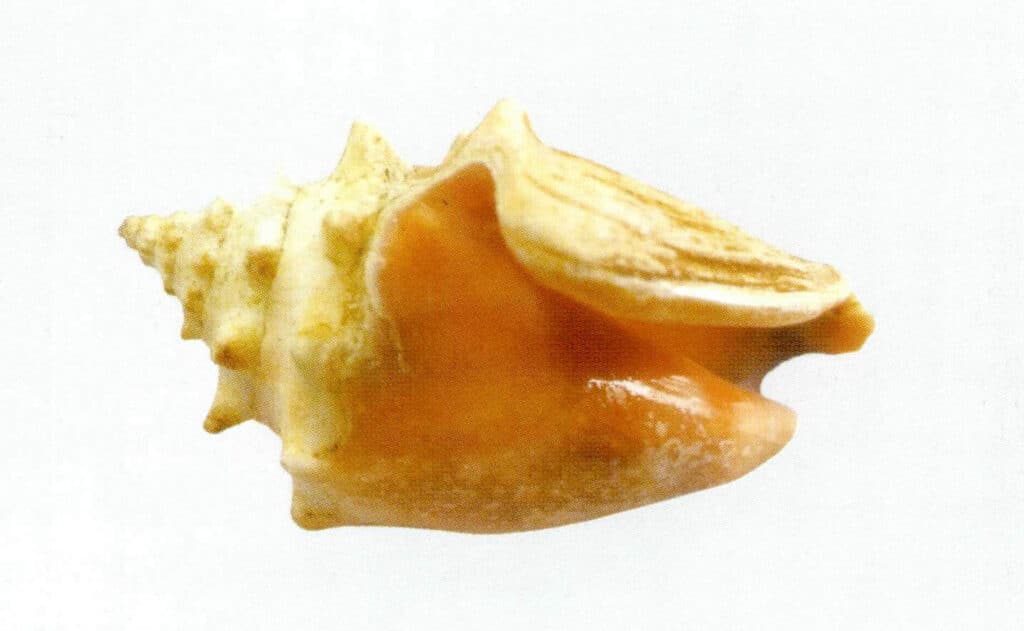
Figure 2-1-10 Shell of a juvenile queen conch
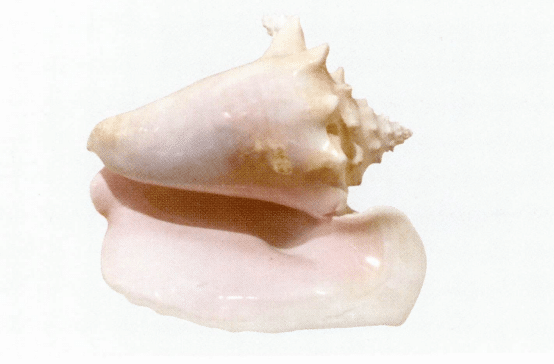
Figure 2-1-11 Shell of a queen conch
The harvesting of the Queen conch mollusk is mainly small-scale. One person is responsible for operating the boat, and one to four person dives to collect the Queen conch mollusk. The usual method is to dive to a depth of 12m and then use a weighted rod to catch them. However, due to over-exploitation of resources, the population of the Queen conch mollusk has decreased in once-abundant areas, with the number of the Queen conch mollusk in shallow waters continuously declining and the depth of harvesting increasing. Decades ago, the Queen conch mollusk could be found just a few meters deep in the Florida Keys.
Nowadays, fishing boats have to go far, and under good luck, divers have to dive very deep to find a few scattered ones.
Modern diving equipment has become the primary tool for harvesting the Queen conch mollusk, allowing divers to reach depths of 30 m or more. Since modern equipment enables divers to stay underwater for more extended periods, divers equipped with modern tools usually discard the shells underwater to facilitate bringing more conch meat back to the boat.
The industrialized conch harvesting industry has emerged in Jamaica, Honduras, and the Dominican Republic. This industry uses large vessels that can approach the coast, with each boat carrying 40 or more divers, and the harvesting process can last an entire week. In actual harvesting, smaller boats are used just like in small-scale harvesting. The large boats serve only as “mother ships,” providing logistics and supplies, and do not participate in the harvesting. Divers can spend the night on the large boats, using them as their base for daily commutes. The harvested the Queen conch mollusk can also be gathered on large boats before being transported to processing plants.
1.6 Aquaculture
(1) Cultivation of the Queen conch mollusk
To supplement over-exploited production areas and to produce the conch meat needed in the market, artificial cultivation of the Queen Conch began in the 1970s. However, the first commercial farm was not established until 1984 in the Turks and Caicos Islands. Large-scale conch farming technology is now very mature. The conch farms in the Turks and Caicos Islands have developed into using large enclosures in the sea to raise conchs of 7 cm until they reach the market size of 15 cm. Each enclosure can accommodate 5,000 conchs. Such high density requires feeding the conchs in the enclosure with formulated feed several times a week.
(2) Cultivation of Conch “Pearls”
Reports of conch “pearl” cultivation began as early as 1936. 2009 Florida Atlantic University cultivated nucleated and non-nucleated conch “pearls.” Nucleated “pearls” are formed using shells, iron, porcelain, and other materials as nuclei to stimulate pearl formation.
1.7 Quality Evaluation
Conch “pearls” are a precious organic gemstone, especially natural conch “pearls.” An oval-shaped 17ct (carat, 1ct=0.2g) pink natural conch “pearl” sold for $12,000 at an auction in Paris in 1984. In 1987, a 6.41ct deep pink conch “pearl” was auctioned for $4,400.
Recent studies show that one in a thousand wild conchs may have a pearl higher than the previous one in ten thousand, but only 1/10 of these conch “pearls” can reach gemstone quality. Pure conch “pearl” necklaces are extremely rare.
The quality evaluation of conch “pearls” first requires determining whether they are natural or cultured and then evaluating quality factors such as color, structure, shape, and size, as seen in Table 2-1-3. Different conch “pearls” qualities are shown in Figures 2-1-12 to 2-1-15.
Table 2-1-3 Quality evaluation of conch “pearls
| Değerlendirme faktörleri | Quality evaluation contents |
|---|---|
| Cause | Natural value is higher than farmed value |
| Renk | Pink has the highest value; the more uniform and vibrant the color, the higher the value |
| Yapı | The more obvious the "flame-like structure," the higher the value |
| Şekil | The higher the symmetry, the higher the value |
| Boyut | The larger, the higher the value |

Figure 2-1-12 "Pearl" sea snail with uneven color and irregular shape (1)

Figure 2-1-13 "Pearl" sea snail with uneven color and irregular shape (2)

Figure 2-1-14 High-quality sea snail "Pearl" (1)
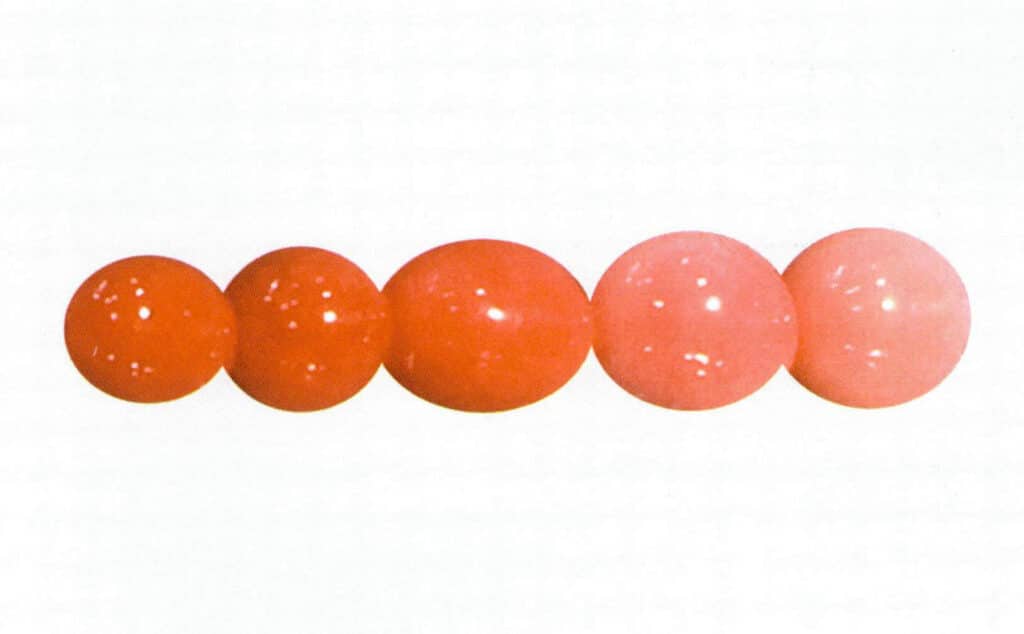
Figure 2-1-15 High-quality sea snail "Pearl" (2)
2. Melo "pearl"
Melo “pearl” is also a type of “pearl” that does not have a pearl layer, produced by a kind of Melo snail (Melo Volutes, also known as Indian volute or bailer shell).
The Melo snail belongs to the class Gastropoda and commonly inhabits warm shallow sea sandy mud bottoms at about 50-100 m, with some living in deeper waters. When foreign objects enter the Melo conch, they continuously stimulate it, forming “Melo” pearls.
The shell of the Melo conch is also known as the “coconut shell” because its shape resembles that of a coconut, as seen in Figures 2-2-1 and 2-2-2. The colors of these shells vary from light yellow to yellow, brownish-yellow to brown, etc. The “Melo” pearls produced from the Melo snail’s shell were also once called “coconut pearls.”
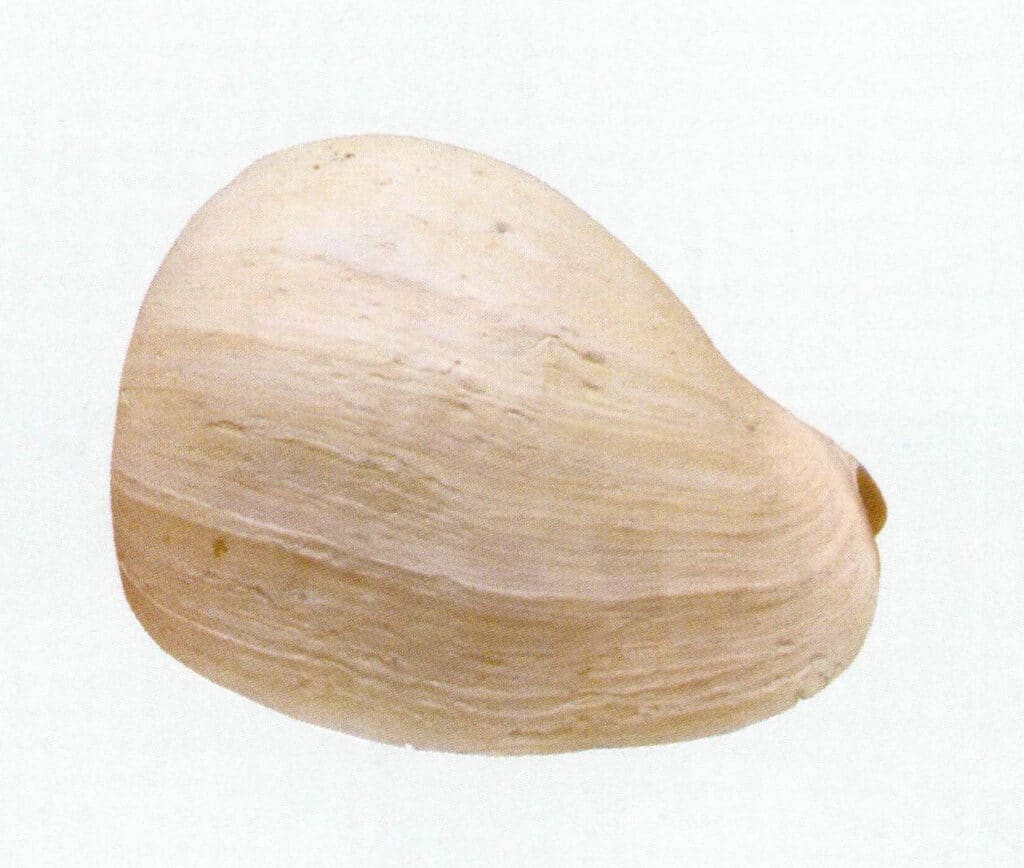
Figure 2-2-1 Melo snail shell (1)
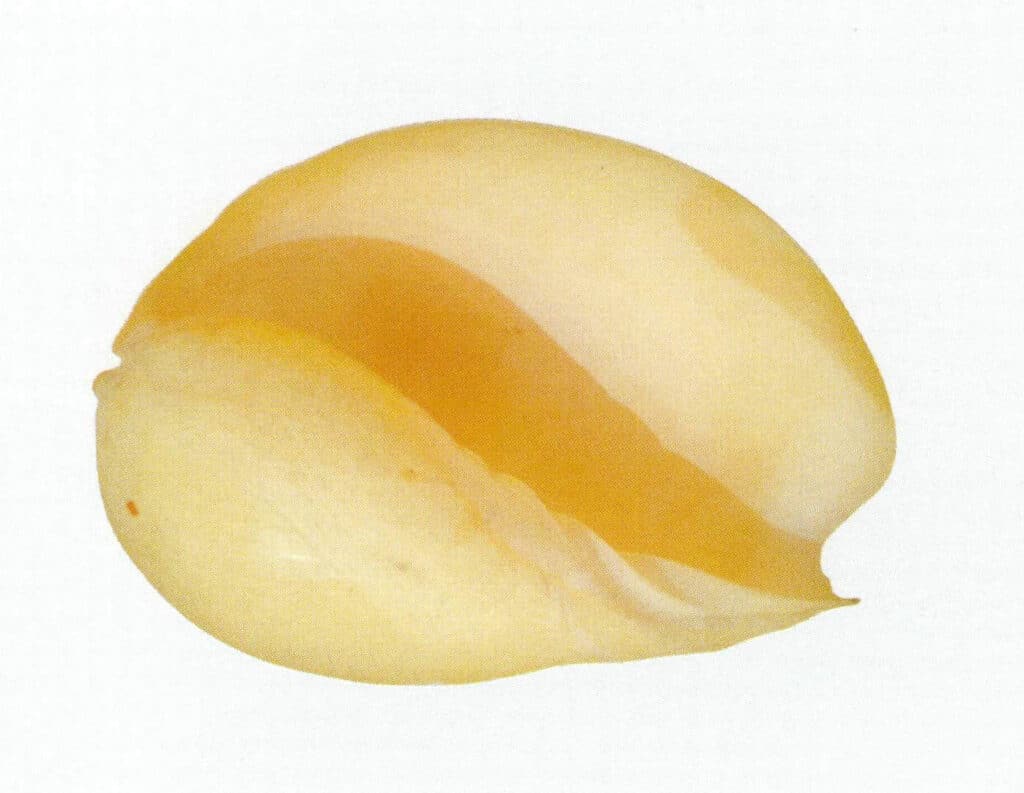
Figure 2-2-2 Mele Snail Shell (2)
2.1 Gemological Characteristics
The basic properties of Melo “Pearl” are shown in Table 2-2-1
Table 2-2-1 Basic Properties of Melo “Pearl”
| Ana Bileşen Mineraller | Formation | Şekil | Yüzey özellikleri | Internal structure | Optik özellikler | |
|---|---|---|---|---|---|---|
| Ana Bileşen Mineraller | Formation | Şekil | Yüzey özellikleri | Internal structure | Parlaklık | Renk |
| Calcium carbonate, shell protein, etc. | Foreign body stimulation of the outer membrane | Circular, thick circular | Often presents visually observable characteristics of "flame structure", see Figure 2-2-3 and Figure 2-2-4 | Concentric ring structure | Silken luster or porcelain-like luster of features | Orange to deep orange, light yellow to yellow, colorless, red-orange is rare; prolonged exposure to sunlight will cause fading |
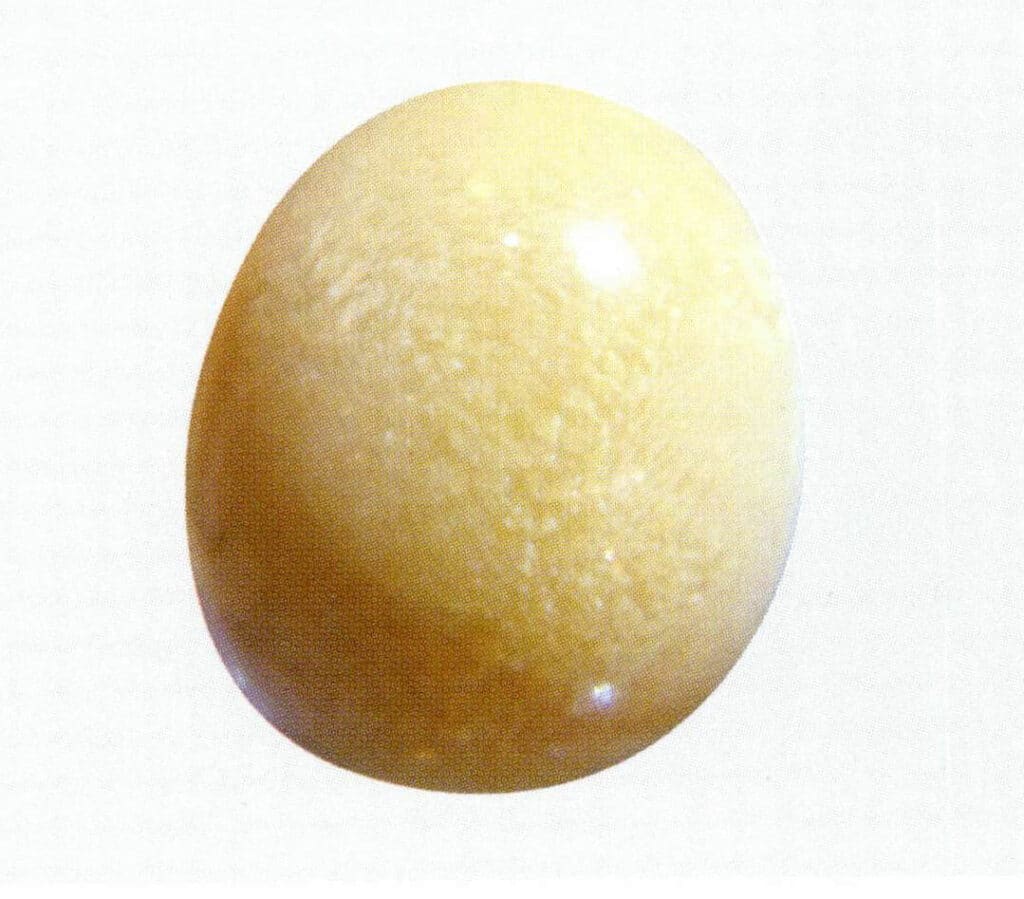
Figure 2-2-3 Mele "Pearl" flame-like structure (1)
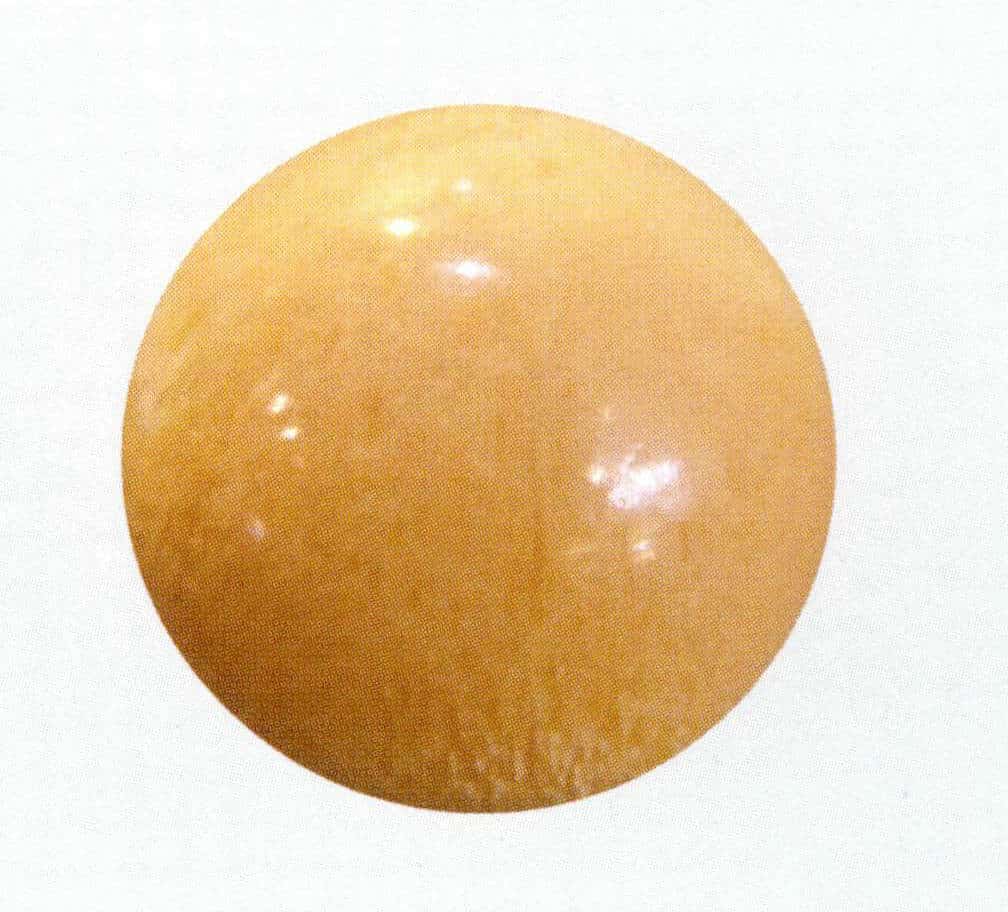
Figure 2-2-4 Mele "Pearl" flame-like structure (2)
2.2 Origin
Melo “pearls” are produced in Vietnam, Myanmar, Indonesia, Thailand, the Philippines, Cambodia, and China.
2.3 Quality Assessment
Natural Melo “pearls” yield is meager, and no reports of successful cultivation exist.
It is difficult to harvest a “pearl” from thousands of Melo snails, exceptionally high-quality “pearls.” The annual production of natural Melo “pearls” is about 30 pieces; round and orange are rare. Some Melo “pearls” have already reached prices of several hundred thousand dollars in Asia.
Evaluate based on quality factors such as color, structure, shape, and size, see Table 2-2-2.
Table 2-2-2 Quality evaluation of Melo “Pearl”
| Değerlendirme faktörleri | Quality evaluation contents |
|---|---|
| Renk | The orange color has the highest value, with the strong orange tone similar to ripe papaya being the most precious. |
| Yapı | The more pronounced the "flame-like structure," the higher the value. |
| Şekil | The rounder it is, the higher the value. |
| Boyut | The larger, the higher the value. |
3. Abalone Pearl
Abalone pearl, is a pearl-like substance produced inside the abalone. The color of abalone pearls is often similar to the color of the inside of the shell, and the surface can display several or even rainbow-like interference colors. Abalone pearls can be referred to without quotation marks.
There are many abalones in coastal areas worldwide, but generally, abalones do not produce pearls. So far, only eight species of abalone have been found to produce pearls. Pearls can form when foreign objects enter the abalone’s digestive system and cannot be digested.
Abalone belongs to the class of gastropod mollusks, which have only a half shell. The shell is thick, flat, and wide, as shown in Figures 2-3-1 and 2-3-2. The shape of the abalone’s mantle is similar to that of the shell, covering the entire back of the body. Unlike other mollusks, there is a slit on the right side of the abalone’s mantle, which corresponds to the position of the holes at the edge of the shell, and tentacles grow at the edge of the slit.
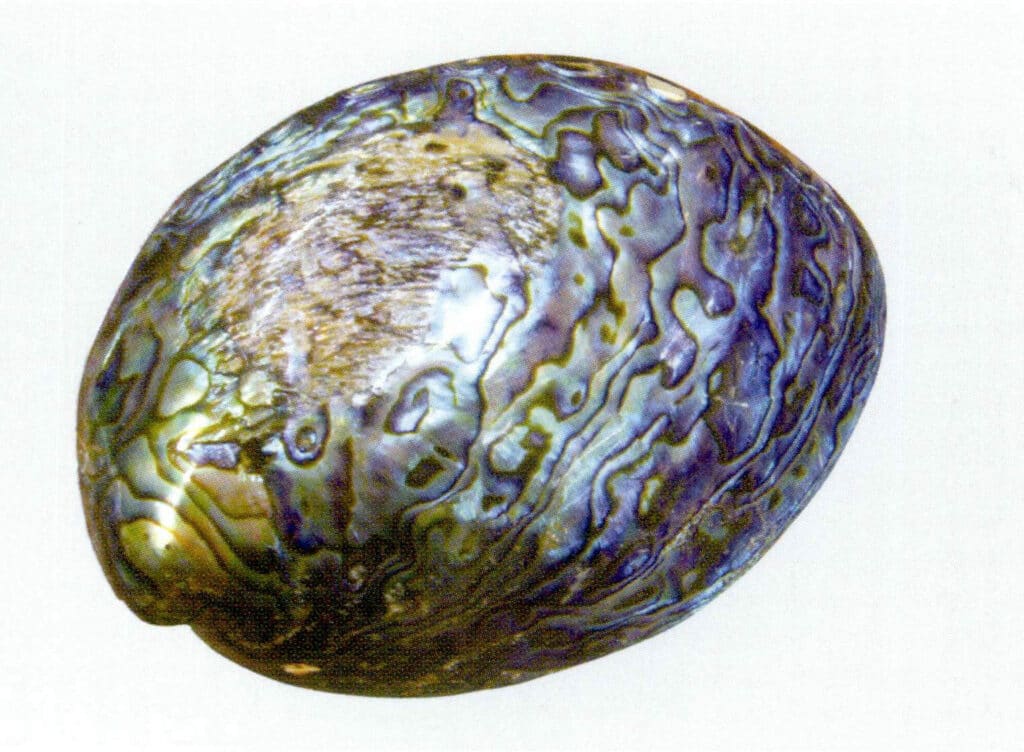
Figure 2-3-1 Abalone Shell (I)

Figure 2-3-2 Abalone Shell (II)
3.1 Gemological Characteristics
Table 2-3-1 Basic Properties of Abalone Pearls
| Ana Bileşen Mineraller | Formation | Şekil | Yüzey özellikleri | Internal structure | Optik özellikler | |
|---|---|---|---|---|---|---|
| Ana Bileşen Mineraller | Formation | Şekil | Yüzey özellikleri | Internal structure | Parlaklık | Renk |
| Calcium carbonate, shell keratin, etc. | Foreign body stimulation | Various shapes, very few are symmetrical, mostly flattened round, trumpet-shaped, or vertical fish tooth-shaped | Pits, spots, layered structure | Concentric ring structure | Pearl luster, bronze-like or even mirror-like luster | Rich and bright colors, with combinations of green, blue, pink, and yellow on one piece |
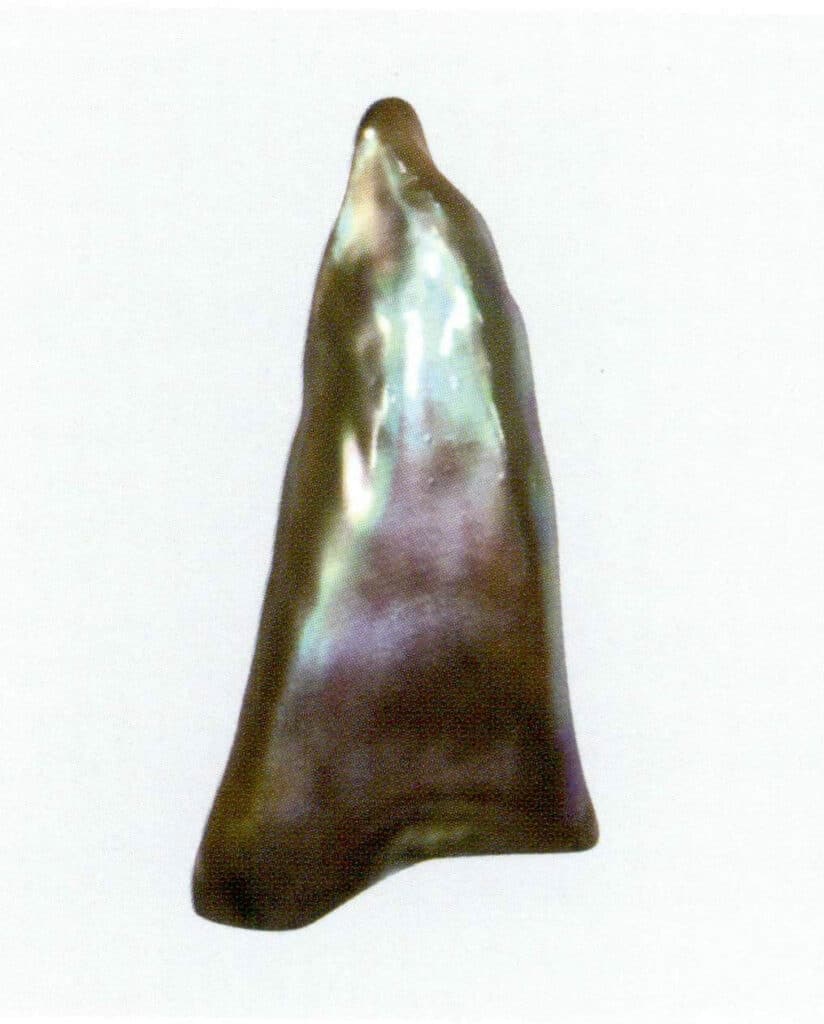
Figure 2-3-3 Abalone Shell (III)
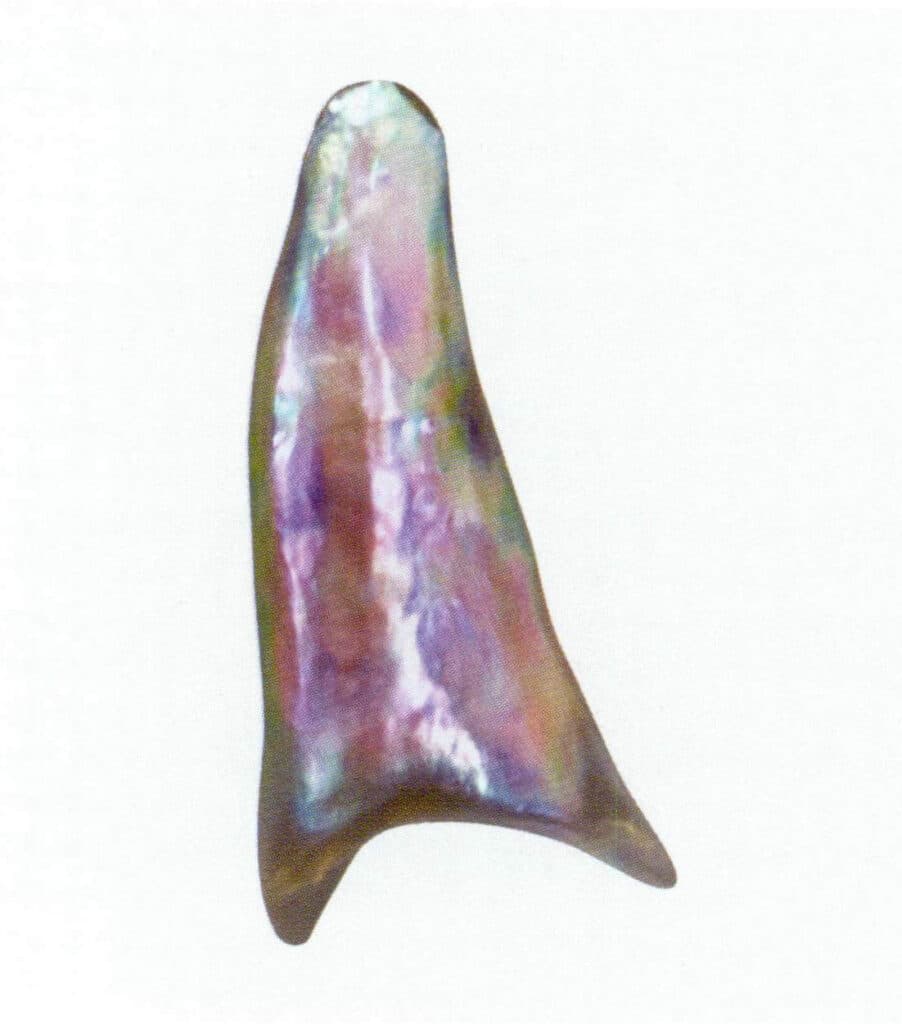
Figure 2-3-4 Abalone Shell (IV)
3.2 Origin
Natural abalone pearls are produced in Australia, New Zealand, Chile, and elsewhere.
3.3 Aquaculture
Cultured abalone pearls are formed by inserting a foreign object into the abalone. This stimulates the abalone to secrete layers of nacre to isolate the foreign object, thus forming abalone pearls. Artificial nucleation can control the shape of the pearls. The abalone shell and the pearls attached to the abalone are shown in Figure 2-3-5.
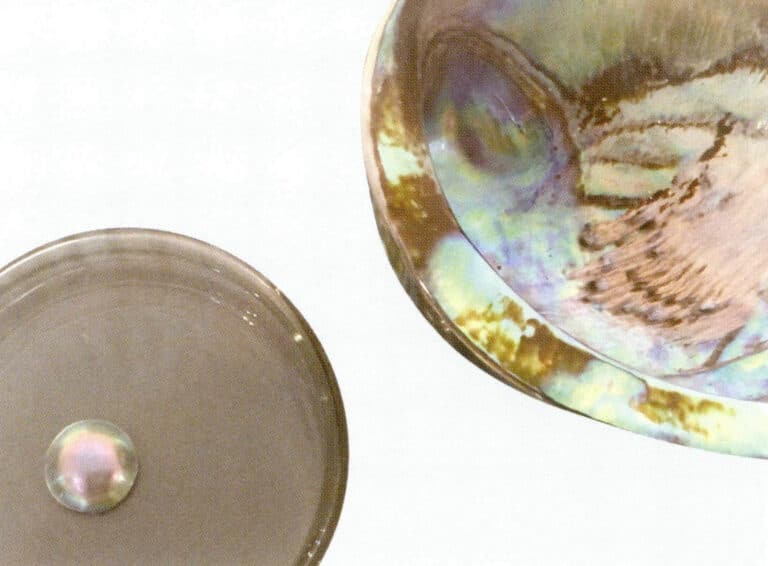
In the late 19th century, French scientist Louis Boutan successfully cultured abalone and free pearls using Haliotis tuberculata in experiments. Since abalone are very susceptible to death once they suffer external injuries, the cultivation
Figure 2-3-5 shows the abalone shell and the pearls attached to the abalone. The difficulty of inserting nuclei for abalone and attached pearls is very high.
It was in the 1980s that the commercial cultivation of abalone pearls became successful. New Zealand cultivated many attached pearls using abalone (Haliotisiris). In the first batch of commercial production in 1997, 6,000 jewelry-grade attached pearls were harvested, with a diameter of 9-20 mm, and the production of free pearls was gradually commercialized.
The method of cultivating abalone-attached pearls is the same as general nucleated pearl cultivation. In New Zealand, nucleation is generally done in 10-12 months; each abalone can only have one nucleus implanted. If two nuclei are implanted, a “bridge” often forms between the two nuclei, resulting in a connected pearl. The implanted nucleus is usually made of 8-16 mm, a type of plastic, and is generally flat and semi-circular in shape. The implanted nucleus must have no sharp ends to avoid harming the abalone. If the nucleus protrudes too high, the top often does not have a layer of nacre deposited. The abalone does not immediately secrete nacre after the procedure; it only deposits a medium shell on the entire or part of the nucleus’s surface. The optimal temperature for Haliotisiris to secrete nacre is 12-15℃; under conditions higher than 18℃ or lower than 9℃, it only secretes a medium shell. After implanting a nucleus with a diameter of 10-11 mm, it can grow to 12 mm, 24-30 months in 18 months, and reach 12-18 mm. Currently, the proportion of abalone that can harvest commercially valuable attached pearls among all implanted abalone is 60%-70%.
3.4 Kalite Değerlendirmesi
The value of abalone pearls is determined by their color, luster, shape, weight, and size. The largest abalone pearl discovered so far measures up to 5 inches (1 inch = 2.54 cm). Abalone pearls are similar to opals and can appear in green, blue, pink, yellow, and combinations of these colors; if peacock green appears, it is even more precious.
An ideal abalone pearl has vibrant colors, a mirror-like luster, a symmetrical shape, appropriate weight, and a maximum diameter exceeding 15 mm. Pearls of this quality are scarce, with an estimated 100,000 abalones needed to harvest one.
The quality evaluation of abalone pearls can be found in Table 2-3-2.
Table 2-3-2 Quality Evaluation of Abalone Pearls
| Değerlendirme faktörleri | Quality evaluation contents |
|---|---|
| Cause | The value of natural abalone pearls is far higher than that of farmed ones. |
| Renk | The brighter and richer the color, the higher the value |
| Parlaklık | The stronger the luster, the higher the value; strong luster can be like bronze or even mirror¬like. |
| Şekil | The more symmetrical the shape, the higher the value |
| Boyut | The larger, the higher the value |
4. Tridacna "pearl"
Tridacna “pearl” is also known as giant clam pearl, which forms inside the shell of Tridacnidaespp. Tridacna “pearl” does not have a nacre layer and generally has a porcelain-like or silky luster.
Tridacna belongs to the phylum Mollusca and the class Bivalvia and is the largest bivalve in the ocean, with a maximum body length of over 1 m and a weight exceeding 300 kg. The shell is thick and heavy, with a toothed edge, and the two shells are of similar size. The inner shell is pure white and smooth, as white as jade. The outer ligament usually has a large foot muscle hole. The hinge has one central tooth and 1-2 posterior teeth. The mantle scar is complete, the anterior adductor muscle is absent, and the posterior adductor muscle is near the center.
The largest natural seawater pearl discovered in the world, known as the “Pearl of the Lord” or “Pearl of Lao Tzu”, was the Tridacna “pearl” caught in 1934 in the bay of Palawan, Philippines, weighing 6350 g.
Tridacna “pearl” has a porcelain-like appearance and lacks a nacre layer. Tridacna’s “pearl” composition comprises tungsten carbonate crystals and an organic matrix. The calcium carbonate crystals of Tridacna “pearl” are fibrous and prismatic, oriented perpendicular to the surface of the pearl. Light interacts between the fibrous prisms, creating a texture similar to “flames.”
Tridacna and Tridacna “pearl” are shown in Figures 2-4-1 and 2-4-2. The basic properties of “pearl” are shown in Table 2-4-1, Figure 2-4-3, and Figure 2-4-4.
Table 2-4-1 Basic properties of Tridacna “pearl”
| Ana Bileşen Mineraller | Formation | Şekil | Yüzey özellikleri | Internal structure | Optik özellikler | |
|---|---|---|---|---|---|---|
| Ana Bileşen Mineraller | Formation | Şekil | Yüzey özellikleri | Internal structure | Parlaklık | Renk |
| Calcium carbonate, conchiolin, etc. | Foreign body stimulation of the mantle membrane | Circular, elliptical | "Flame structure" that often presents visible characteristics to the naked eye | Concentric ring structure | Silky luster or porcelain-like luster of the feature | White, slightly yellow to light yellow |
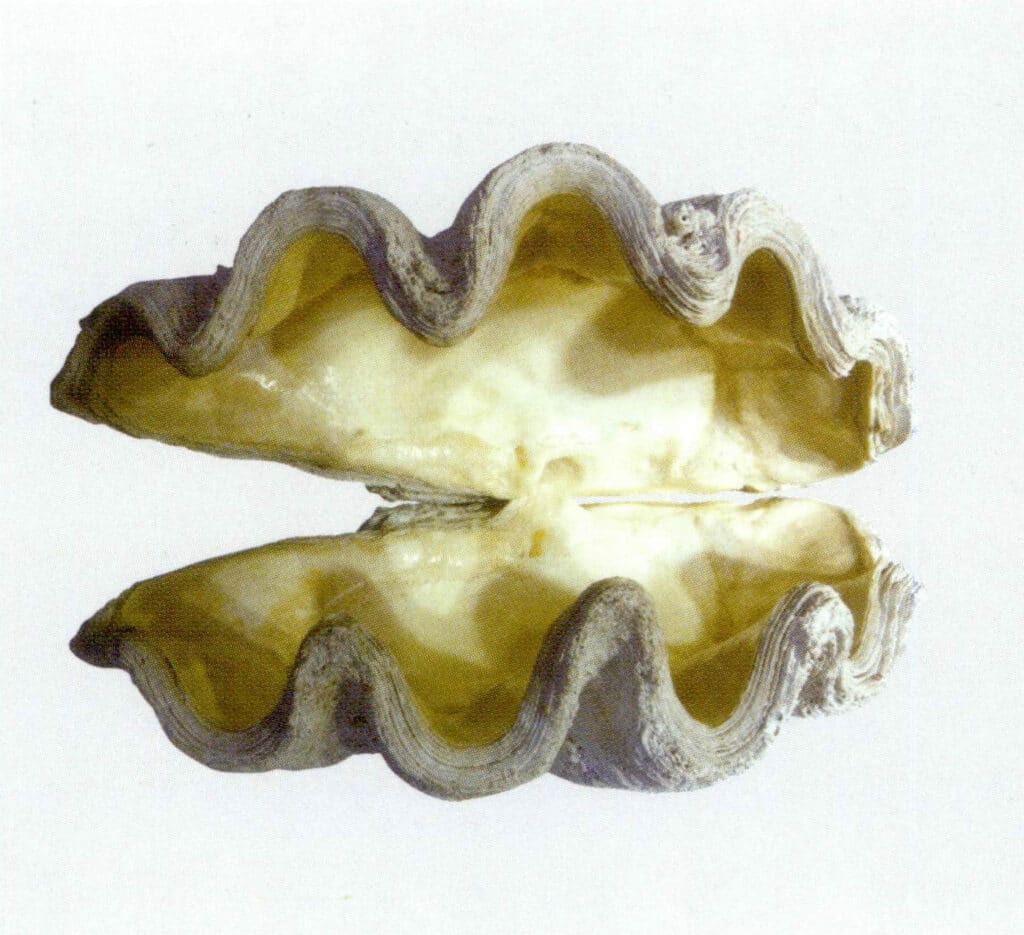
Figure 2-4-1 Giant clam shell
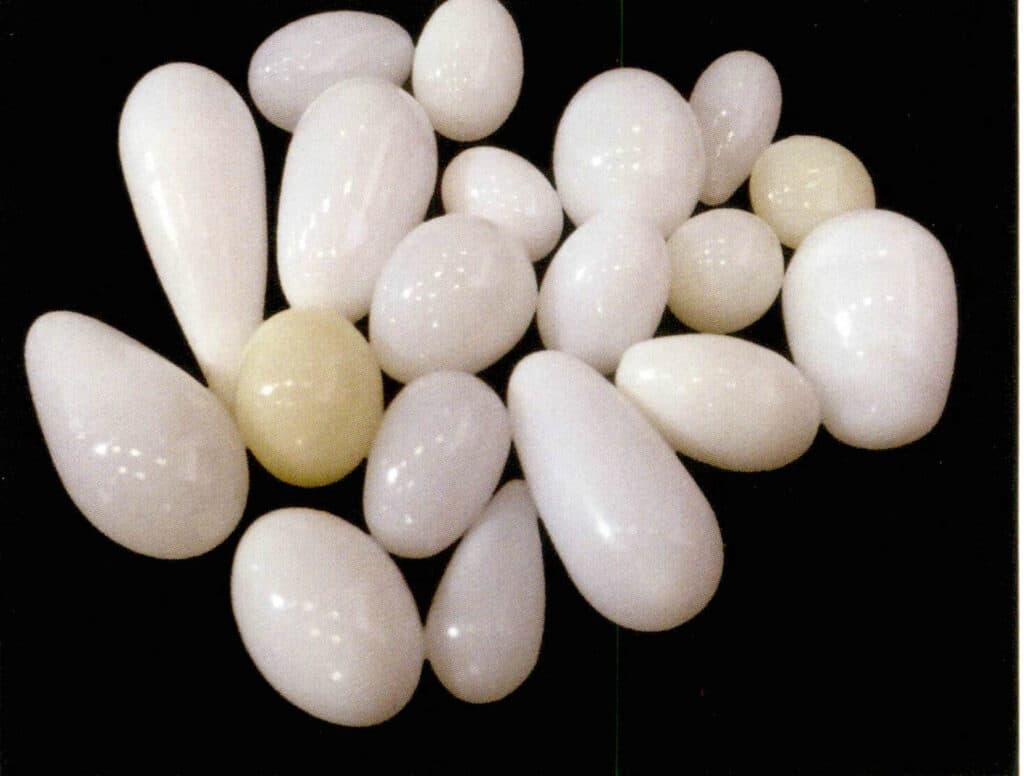
Figure 2-4-2 Tridacna pearl (white) and conch "pearl" (1)
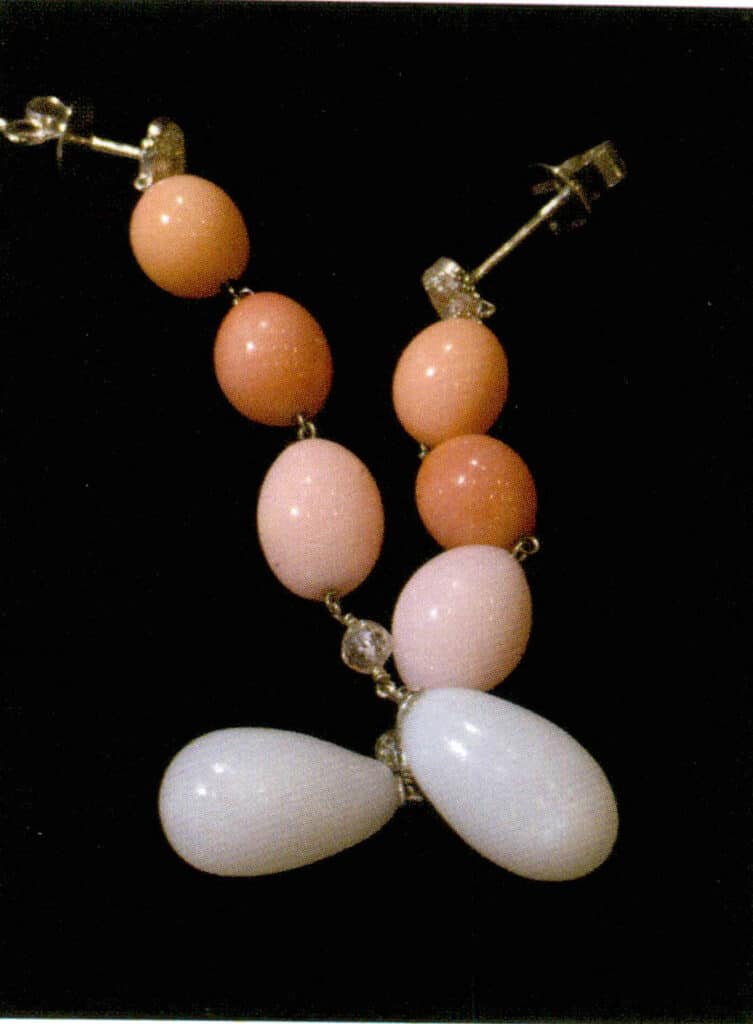
Figure 2-4-3 Tridacna pearl (white) and conch "pearl" (2)
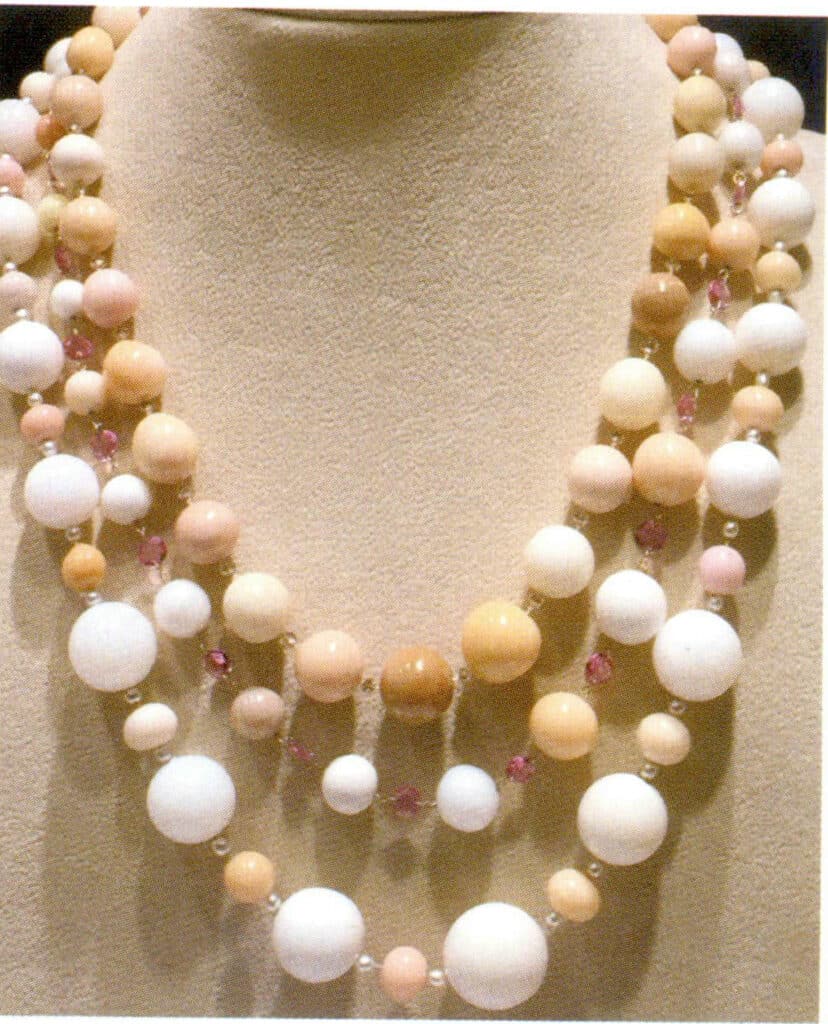
Figure 2-4-4 Tridacna pearl (white) and conch "pearl" (3)
5. Quahog pearls
Quahog pearls are primarily produced within the North American quahog (Mercenaria), a bivalve mollusk. The North American quahog is a type of shellfish mainly distributed along the Atlantic coast of North America. It can also be found along the Pacific coast of California.
The basic properties of quahog pearls are shown in Table 2-5-1.
Table 2-5-1 Basic properties of quahog pearls
| Ana Bileşen Mineraller | Formation | Şekil | Yüzey özellikleri | Internal structure | Optik özellikler | |
|---|---|---|---|---|---|---|
| Ana Bileşen Mineraller | Formation | Şekil | Yüzey özellikleri | Internal structure | Parlaklık | Renk |
| Aragonite, etc. | Foreign body stimulation | Mostly not round, commonly flat-bottomed button shape | Characteristic "flame structure" | Concentric ring structure | Porcelain luster | White to brown, and light pinkish-purple to deep purple |
6. Nautilus pearl
The chambered nautilus produces nautilus pearl (Nautilus pompilius), one of the rarest types of natural pearls, mainly found along the coasts of the Philippines.
The nautilus is a species of the nautilus family, which appeared over 500 million years ago in the Ordovician period and is known as a “living fossil.” The nautilus shell is thin and brittle, spirally coiled, with a white or milky white surface, and the giant shell has an average diameter. It can reach up to 22 cm. Growth lines radiate from the umbilicus of the shell, smooth and dense, primarily reddish-brown. The entire spiral shell is soft and disk-like, resembling a parrot’s beak, hence the name “nautilus.” After removing the white outer shell, the inner layer can exhibit an iridescent luster, which is why it is also called “pearl nautilus.” The shell of the pearl nautilus consists of many chambers, approximately 36 chambers, with the last chamber being the body chamber, known as the “living chamber.” The other chambers are filled with gas, also called “gas chambers.” The septa separates the chambers, and the siphuncle passes through the septa to connect the chambers and transport gas and water flow. See Figures 2-6-1 and 2-6-4 for the nautilus and its shell.
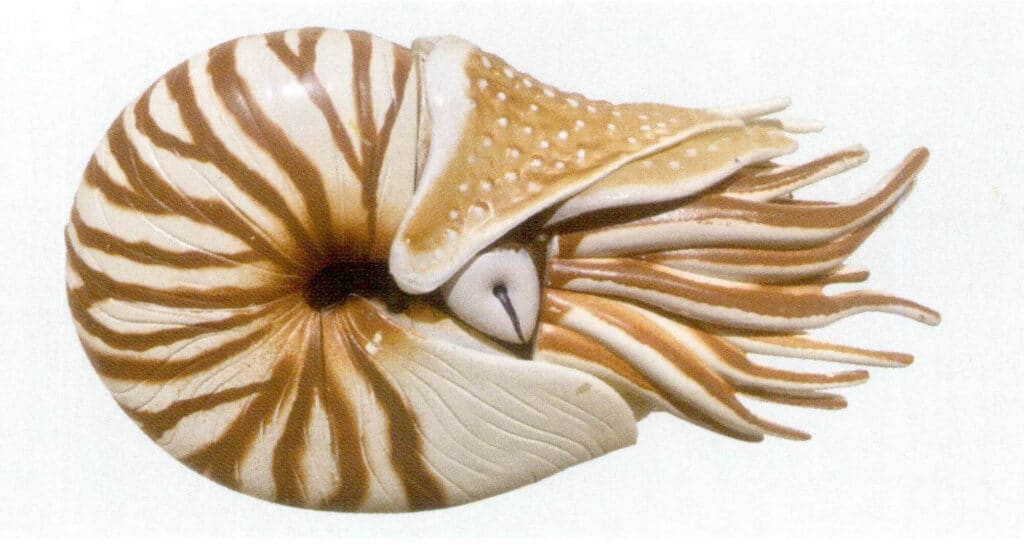
Figure 2-6-1 Nautilus

Figure 2-6-2 Outer layer of the nautilus shell
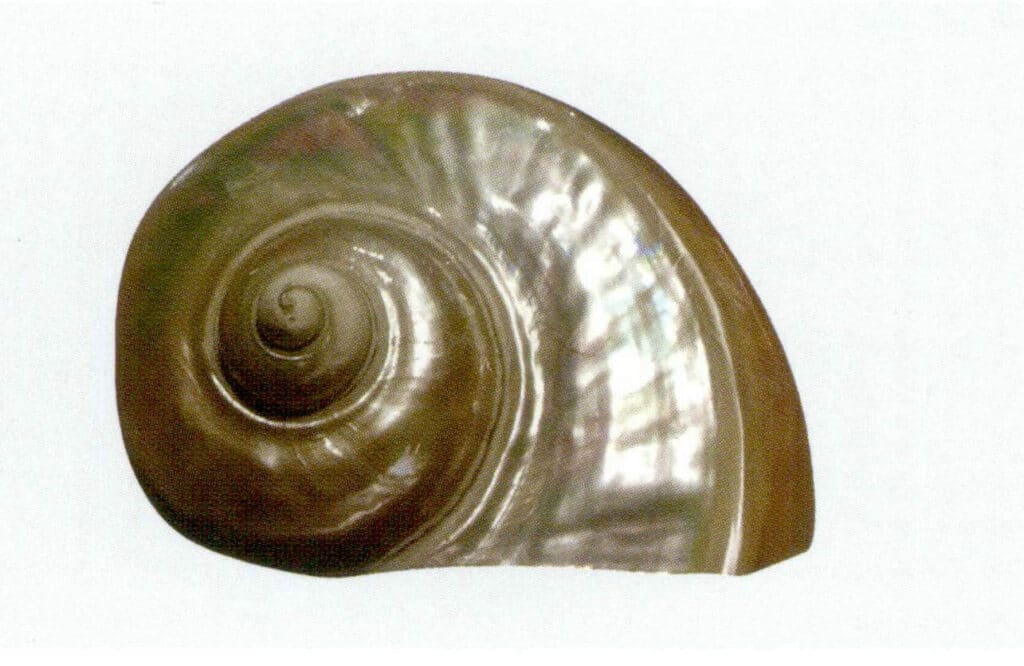
Figure 2-6-3 Inner layer of the nautilus shell

Figure 2-6-4 Interior of the nautilus shell
Table 2-6-1 Basic properties of nautilus pearls
| Ana Bileşen Mineraller | Formation | Şekil | Yüzey özellikleri | Internal structure | Optik özellikler | |
|---|---|---|---|---|---|---|
| Ana Bileşen Mineraller | Formation | Şekil | Yüzey özellikleri | Internal structure | Parlaklık | Renk |
| Calcite,etc | Foreign body stimulation | Pear-shaped, oval-shaped, and irregular | Often presents visible characteristics of "flame structure" | Concentric ring structure | Porcelain-like luster | White, etc |
Section II Shells
1. Uygulama Tarihi ve Kültürü
Shell refers to many mollusks’ large, hard shells, such as clams, oysters, and sea snails. The main components of shells are 95% calcium carbonate and a small amount of chitin. Humans have a long history of discovering and using shells; since ancient times, humans have used shells as decorative items. For example, the Peking Man from the Upper Cave of Zhoukoudian made ornaments from perforated shells, which should be considered one of the earliest forms of jewelry. In ancient times, shells were also used as currency.
Shells are tough, easily processed, and carved into exquisite decorative items and crafts. They are currently widely used to make buttons, beads, cabochons, inlays, shell carvings, boxes, and inlays for furniture. Reasonable development and utilization of shells can greatly increase their value.
2. Nedenler
Shells are composite materials produced by mollusks that combine inorganic minerals (CaCO3)from the surrounding environment with organic substances generated by themselves under environmental temperature and pressure. This process is a form of biomineralization regulated by organic matter. Some shells, especially those of pearl oysters, have a pearl layer known as “nacre,” similar in composition and structure to pearls.
The pearl layer is formed under the control of organic matter secreted by the mantle cells of mollusks. It begins with the secretion of an organic framework by the mantle, and inorganic ions and proteins secreted by the epithelial cells on the mantle seep out in the form of calcium carbonate colloidal droplets through the pores of the mantle protein layer within this framework. As it gradually grows, expands, thickens, and extends, the upward growth stops when it is hindered by the upper layer of the shell material; it then develops laterally, becoming flat until adjacent crystals restrict it. This results in the orderly arrangement of aragonite microcrystals within the pearl layer, resembling a mosaic, as well as the structural characteristics of shell material distributed in its gaps, and the calcium carbonate layer also gradually grows, expands, thickens, and then grows laterally in a flat manner.
The theories regarding the formation of the pearl layer mainly include the following:
(1) The age theory of the epithelial cells of the outer mantle
Since the edge of the shell is composed of calcite prism layers. In contrast, the inner side is composed of the pearl layer, and the epithelial cells at the outer edge of the shell (corresponding to the position of the prism layer) become older as they move inward into the shell.
The younger columnar cells at the outer edge of the epithelial layer of the mantle are related to the prism layer; the older cuboidal epithelial cells on the inner side are related to the formation of the pearl layer.
(2) Intracellular crystallization and extracellular assembly theory
This theory posits that the outer membrane cells secrete organic matter, ions, and other shell precursors, which crystallize and precipitate in the outer cavity between the membrane and the outer shell layer through a series of interactions to form the shell. Low-density calcium particles exist in the vesicles of the epithelial cells outside the membrane; in the initial pearl layer on the inner surface (facing the membrane), the structure of the pearl layer is quite imperfect, with poor orientation. Still, the entire pearl layer is highly oriented.
The vesicles in epithelial cells serve as the initial nucleation sites for carbonate minerals in the pearl layer, where calcite prisms and aragonite tablets are formed and then transported by vesicles to the outer cell surface to assemble into the calcite prism layer or aragonite pearl layer of the shell.
(3) “Compartment” theory
This theory suggests that organic matter pre-forms compartments, where crystals nucleate and grow, and the compartments’ shape restricts the crystals’ shape.
The organic matrix secreted by the mantle forms small compartments. In the compartments, acidic groups bond with calcium ions, increasing crystal growth. When the crystals encounter the organic fiber “plates” vertically and adjacent crystals horizontally, their growth stops, ultimately forming the layered structure of the Nacre.
(4) “Mineral Bridge” theory
This theory posits that the structure of the Nacre is formed through the continuous growth of “mineral bridges.” Each “mineral bridge” is essentially cylindrical, with a height equal to the thickness of the organic matrix layer. Crystals can continue to develop on already formed crystals, possibly interspersing through the pores of the matrix between micro-layers and forming the nacre layer through interstitial deposition. Further research on “mineral bridges” has revealed their geometric features and distribution patterns within the organic matrix layer, suggesting that the microstructure of Nacre should be described as a “brick-bridge-mud” structure, where the double-shell nacre layer does not have pre-formed compartments; the “compartments” are merely an illusion. When crystals come into contact with other crystals as they grow, organic matter naturally gets trapped between them.
Aragonite crystals continue to grow through the organic plates’ pores between layers. Each newly nucleated aragonite plate grows vertically towards the mantle until it encounters another layer of interstitial matrix plates, at which point the vertical growth will stop, and then the plates will grow laterally to form new plates. In stacked nacre layers, the vertical growth rate is about twice that of lateral growth, indicating that a newly nucleated plate grows fastest along the c-axis. Once the growing plate encounters the pores in the adjacent interstitial matrix above it, it will pass through the pores like a mineral bridge, allowing a new plate to crystallize; this new plate has a lateral offset relative to the lower plate. As the older plate grows laterally, more mineral bridges are formed between the new plates, allowing the plates to grow simultaneously in more locations. However, the first mineral bridge plays a crucial role when nucleating new plates.
Copywrite @ Sobling.Jewelry - Özel takı üreticisi, OEM ve ODM takı fabrikası
3. Gemolojik Özellikler
3.1 Basic Properties
The basic properties of shells in gemology are shown in Table 6-3-1 and Figures 6-3-1 to 6-3-10.
Table 6-3-1 The basic properties of Shells
| Kimyasal bileşim | CaCO3 , Organic components: hydrocarbons, keratin | |
|---|---|---|
| Kristal Hal | Inorganic components: orthorhombic system (aragonite), trigonal system (calcite), organic component: amorphous | |
| Yapı | Layered structure or radial structure | |
| Optik özellikler | Renk | Can present various colors, generally white, gray, brown, yellow, pink, etc. |
| Parlaklık | Greasy luster to pearly luster | |
| Şeffaflık | Translucent | |
| Özel optik efektler | Can have iridescent effects, pearly luster | |
| Mekanik özellikler | Mohs sertliği | 3 ~ 4 |
| Sertlik | Yüksek | |
| Bağıl yoğunluk | 2.86 | |
| Structural characteristics | Layered structure, surface overlapping layer structure, "flame-shaped" structure, etc. | |
| Processed into shapes | Carved into reliefs and other sculptures using the color layering characteristics of shells; beads, curved surfaces, etc.; grinding shells into small pieces and assembling them into various crafts | |

Figure 6-3-1 The Luster of Shells ( Pteria Penguin)
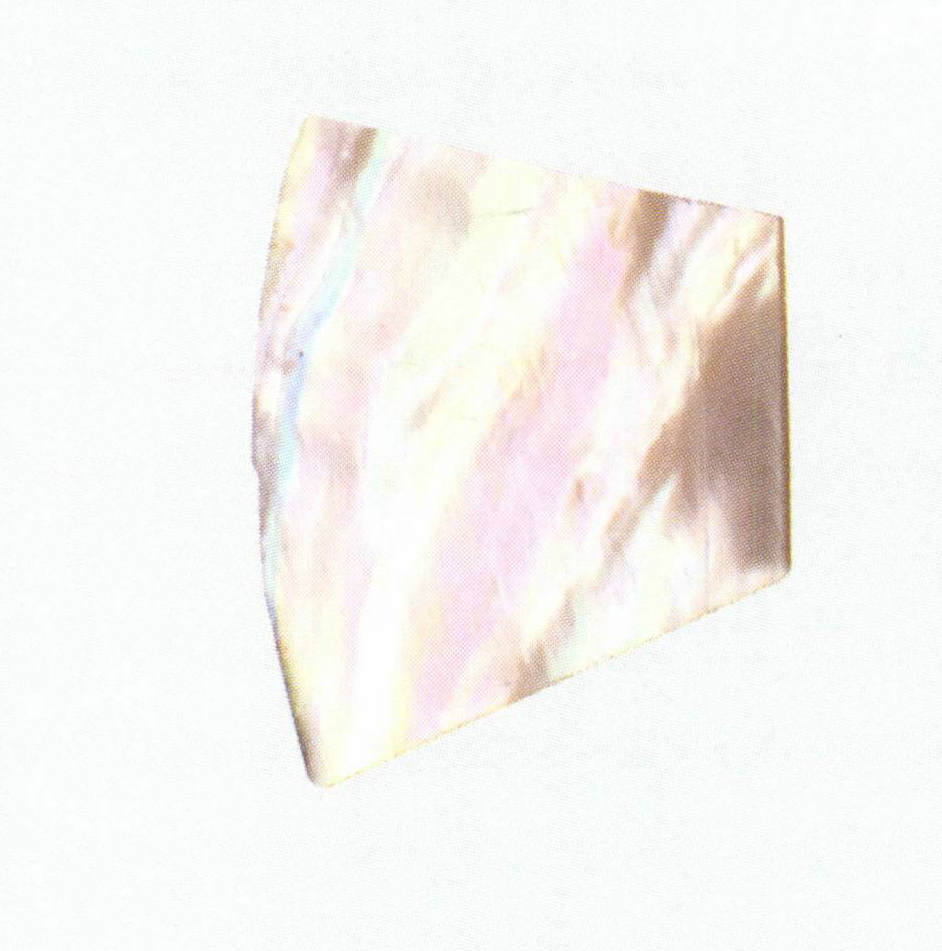
Figure 6-3-2 The Luster of Shells (Triangle Shell mussel)
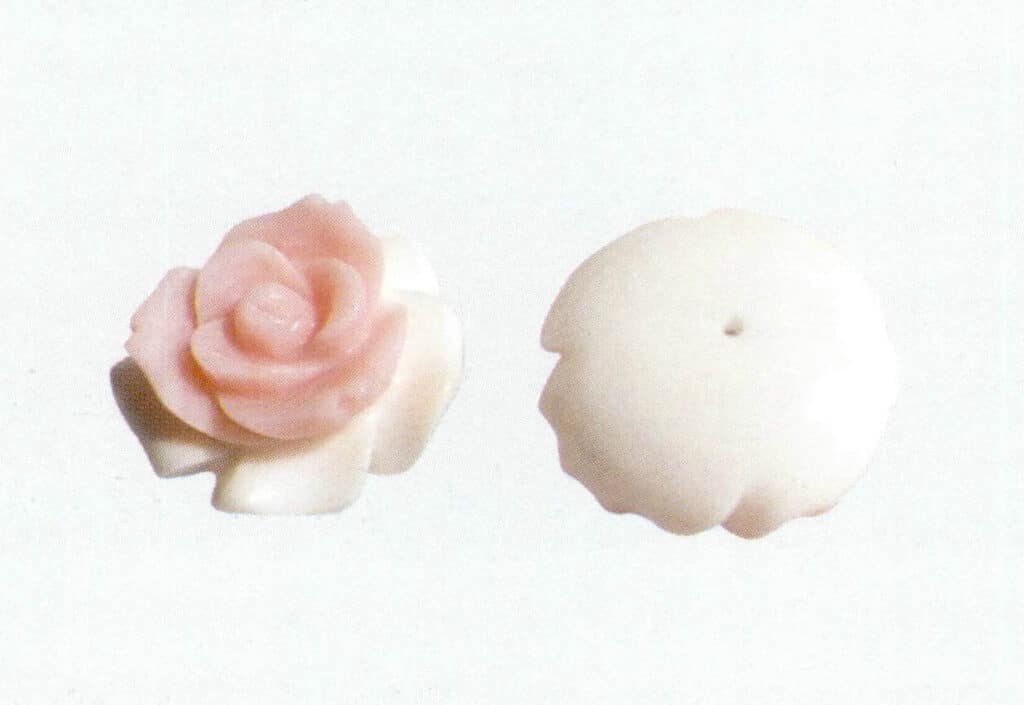
Figure 6-3-3 Shell Carvings

Figure 6-3-4 Shell Relief (1)
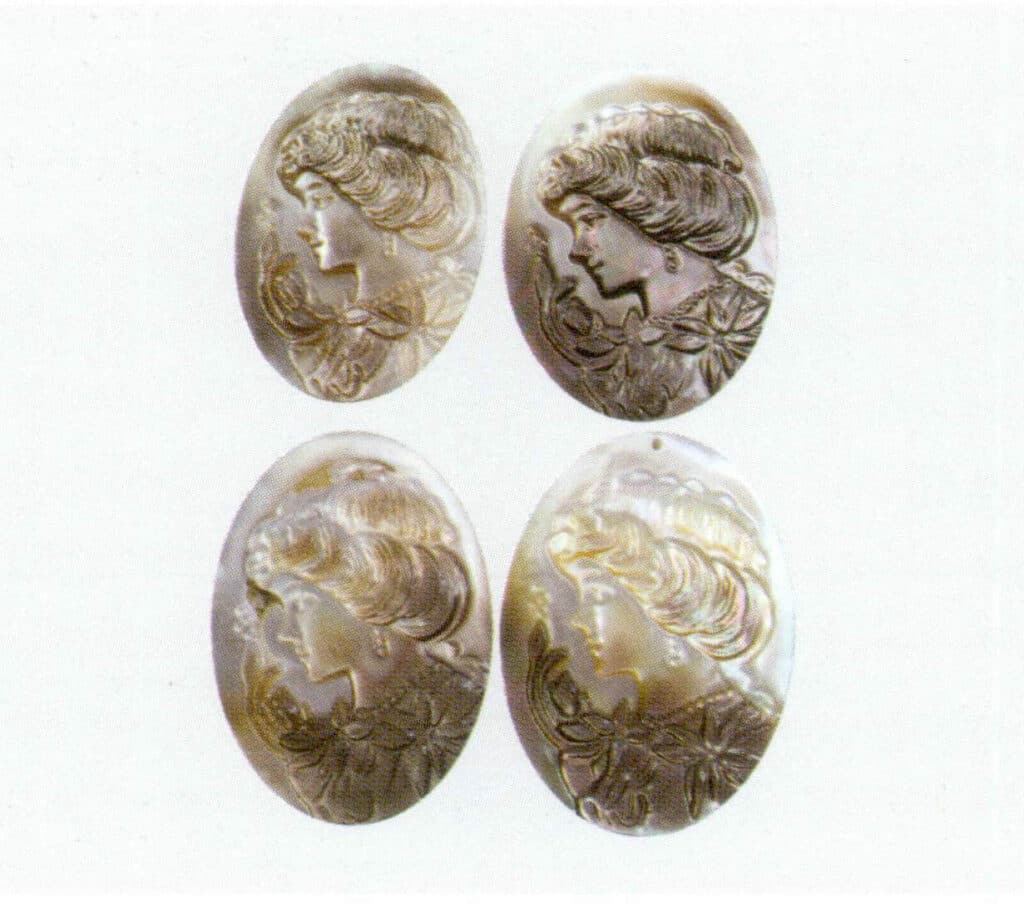
Figure 6-3-5 Shell Relief (2)
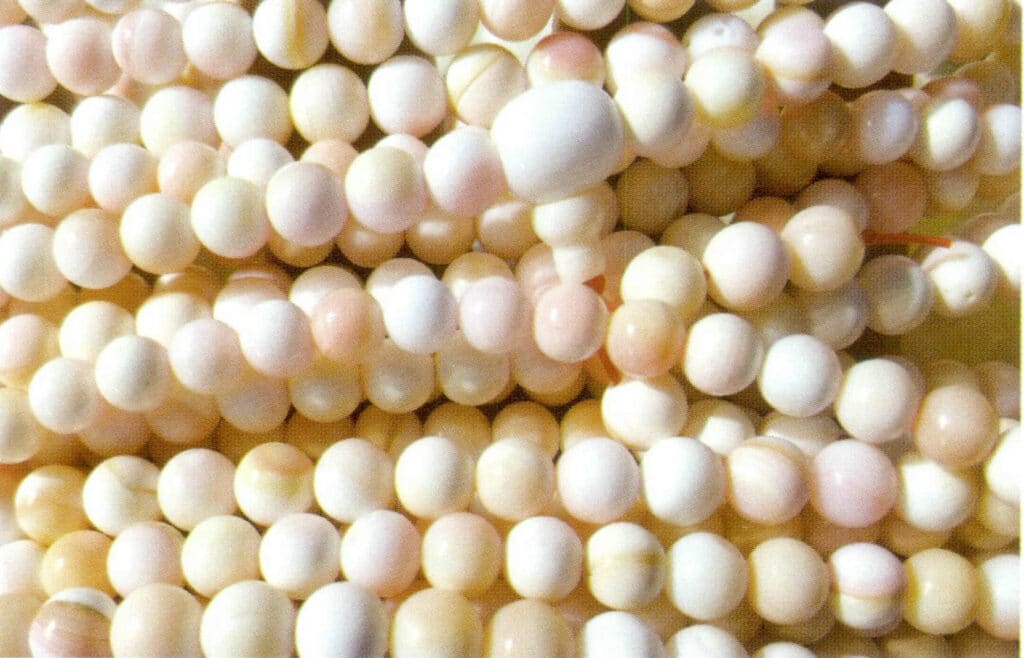
Figure 6-3-8 Shell Beads

Figure 6-3-9 Shell Crafts (1)

Figure 6-3-10 Shell Crafts (2)
3.2 Mechanical Properties
Shells serve as protective equipment for soft-bodied animals, primarily functioning to resist compression and prevent damage to the shell that could harm the body. Current scientific research indicates that shells can have seven types of microstructures: columnar nacre structure, flaky nacre structure, clustered leaf structure, colorful structure, cross laminated structure, hybrid cross-laminated structure, and uniformly distributed structure.
As the innermost material of general shells, Nacre has the best mechanical properties among these seven structures, especially notable for its toughness. The “brick-bridge-mud” structure of the Nacre not only increases crack resistance and prevents crack propagation but also effectively enhances the elastic modulus, material strength, and toughness at the organic matrix interface of the Nacre. Its fracture toughness is about 3000 times that of the fracture toughness of calcium carbonate crystals, which are its basic components. Therefore, studying the microstructure and properties of Nacre and synthesizing artificial materials with nacre-like structures has become a hot topic in current biomineralization and biomimetic design research.
4. Sınıflandırma
Based on morphological characteristics that include shells and soft bodies, they are generally divided into five categories, among which gastropods and bivalves are the two most common types. Common classifications of shells are shown in Table 6-4-1.
The shells commonly used for decorative gemstone materials mainly include bivalve mother-of-pearl and giant clam, gastropod abalone, and giant anchovy snail.
Table 6-4-1 Common Types of Shells
| Shell Types | Özellikler | Common Shell Species |
|---|---|---|
| Gastropods (Univalves) | A spiral-shaped shell with a developed foot located on the ventral side of the body | Queen Conch Shell, abalone shell, etc. |
| Bivalves (Pecten) | Two shells on the left and right, connected by a ligament; gills are usually lamellate | Hyriopsis cumingii, Pinctada martensi, etc. |
| Polyplacophora | The shell is flat, with 8 shell plates covering the center of the back. | Chiton, etc. |
| Burrowing types (tubular shell types) | The shell is slightly curved, resembling a horn or ivory. | Ivory shell, etc |
| Cephalopods | Shells that are spiral or right-angled in shape, internally divided into air chambers by partitions | Ammonite fossils, nautilus, etc. |
4.1 Bivalve mother-of-pearl shells
Bivalve mollusks mainly include marine shells and freshwater clams.
(1) Pinctada martensi shell
The Pinctada martensi is the mother shell that produces Akoya cultured pearls. The shell is asymmetrical, with the left shell slightly convex and the right shell relatively flat.
The Pinctada martensi is widely distributed along the coasts of provinces such as Guangdong and Hainan in China; abroad, it is also found in countries like Sri Lanka, India, Japan, and Vietnam, with Japan having the largest population.
The main mineral phase of the Pinctada martensi shell is aragonite, with the secondary mineral phase being calcite. The outer and inner edges of the shell are primarily composed of prismatic calcite, while the inner nacreous layer is mainly composed of foliated aragonite, as shown in Figures 6-4-1 to 6-4-4.
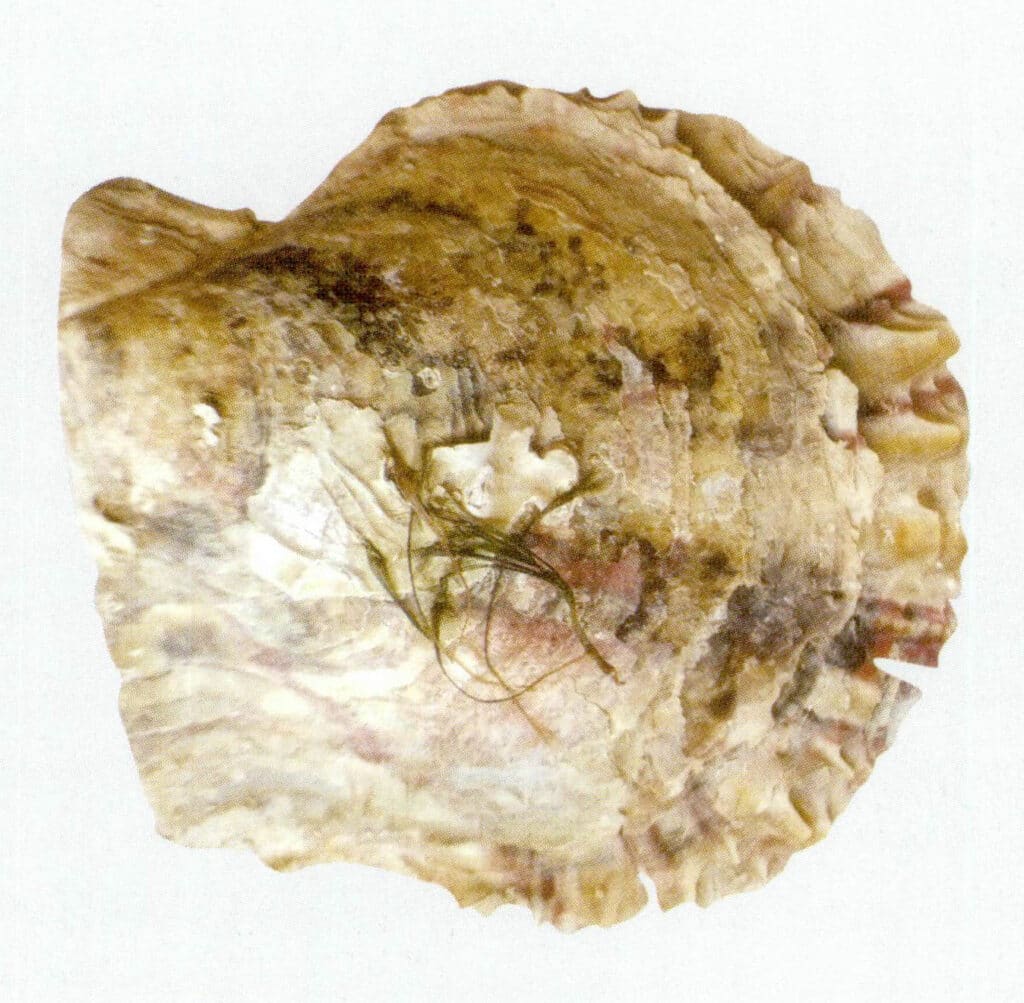
Figure 6-4-1 Lateral view of the Pinctada martensi
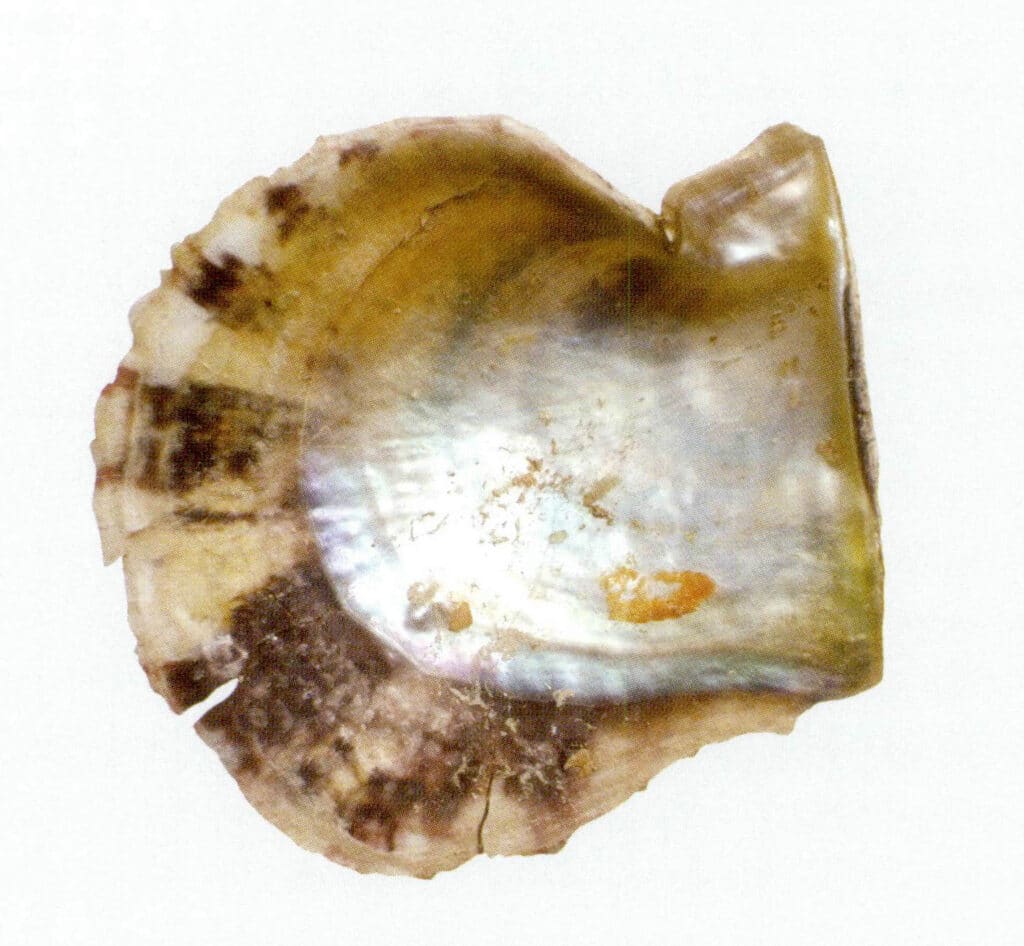
Figure 6-4-2 Medial view of the Pinctada martensi

Figure 6-4-3 Scanning Electron Microscope (SEM) image of the medial edge calcite area of the Pinctada martensi
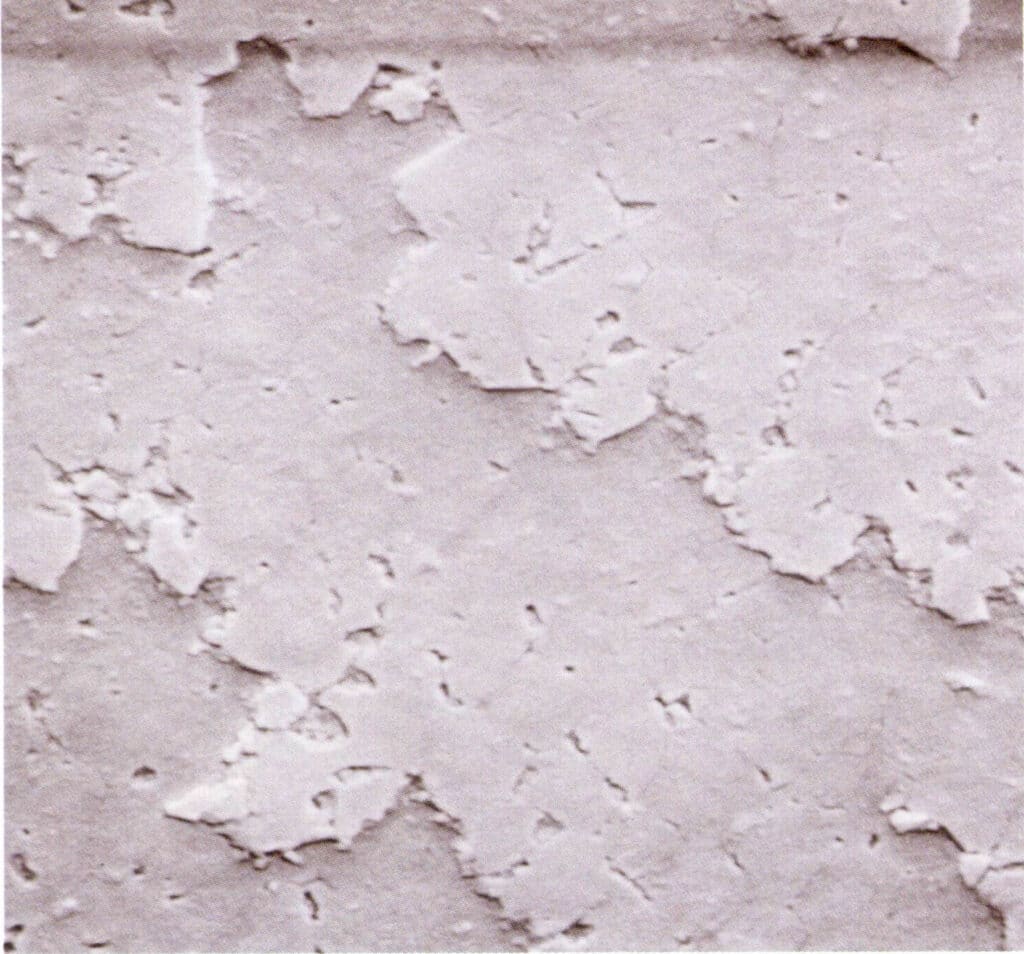
Figure 6-4-4 Scanning Electron Microscope (SEM) image of the medial nacreous layer aragonite area of the Pinctada martensi
XRD experiments also indicate that the main phases of the Pinctada martensi are aragonite and calcite. When comparing aragonite, one of the main phases of the Pinctada martensi, with synthetic aragonite (ICDD Card No. 41-1475), although the positions of the diffraction peaks are consistent, the relative intensity varies significantly. The (111) crystal plane of the aragonite standard data is the strongest peak, while the (012) crystal plane diffraction peak in the Pinctada martensi shell spectrum is the strongest. Additionally, the (002) crystal plane diffraction peak of the aragonite standard data is very weak, but the actual peak intensity reaches a moderate level. The nacreous layer aragonite of the Pinctada martensi exhibits preferred orientation, with two directional arrangements existing along the nacreous layer, namely (002) and (012).
The Marcia shell’s XRD data is shown in Figures 6-4-5
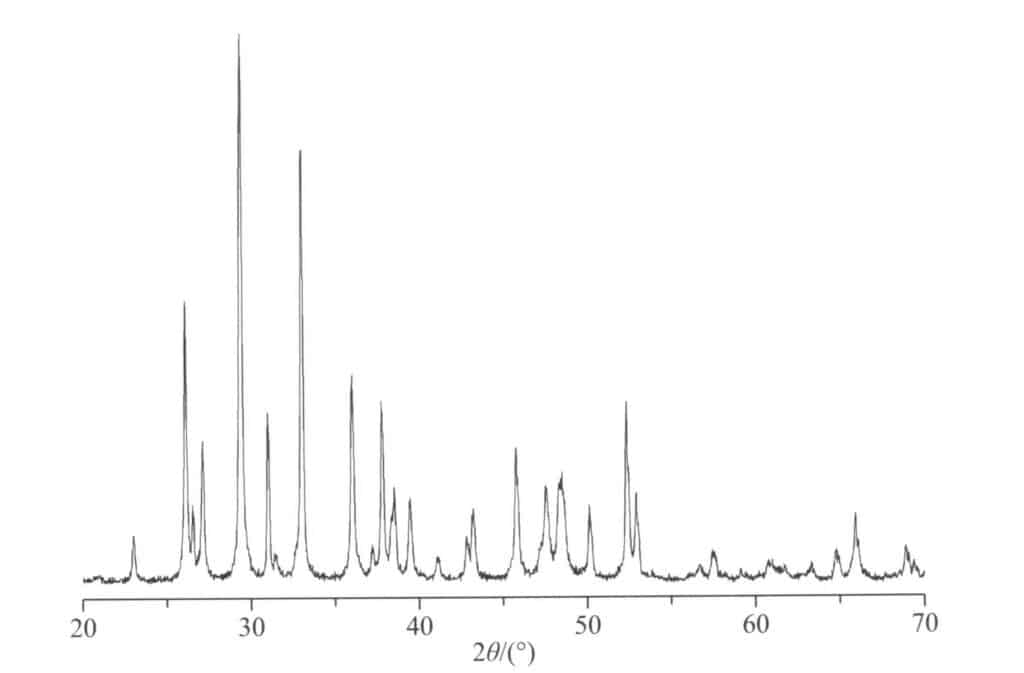
(2) Giant pearl oyster
The giant pearl oyster has very thick shells on both the left and right sides, with individuals reaching over 30 cm and shell weights exceeding 5 kg. The giant pearl oyster is the main mother-of-pearl for large pearls. See Figures 6-4-6 to 6-4-9.
The giant pearl oyster is mainly distributed along the coasts of countries such as Australia, Myanmar, the Philippines, Thailand, Malaysia, and Indonesia, with a small population inhabiting the waters around southwestern Guangdong and Hainan Island in China.

Figure 6-4-6 Outer side of the giant pearl oyster (gold-lipped oyster)
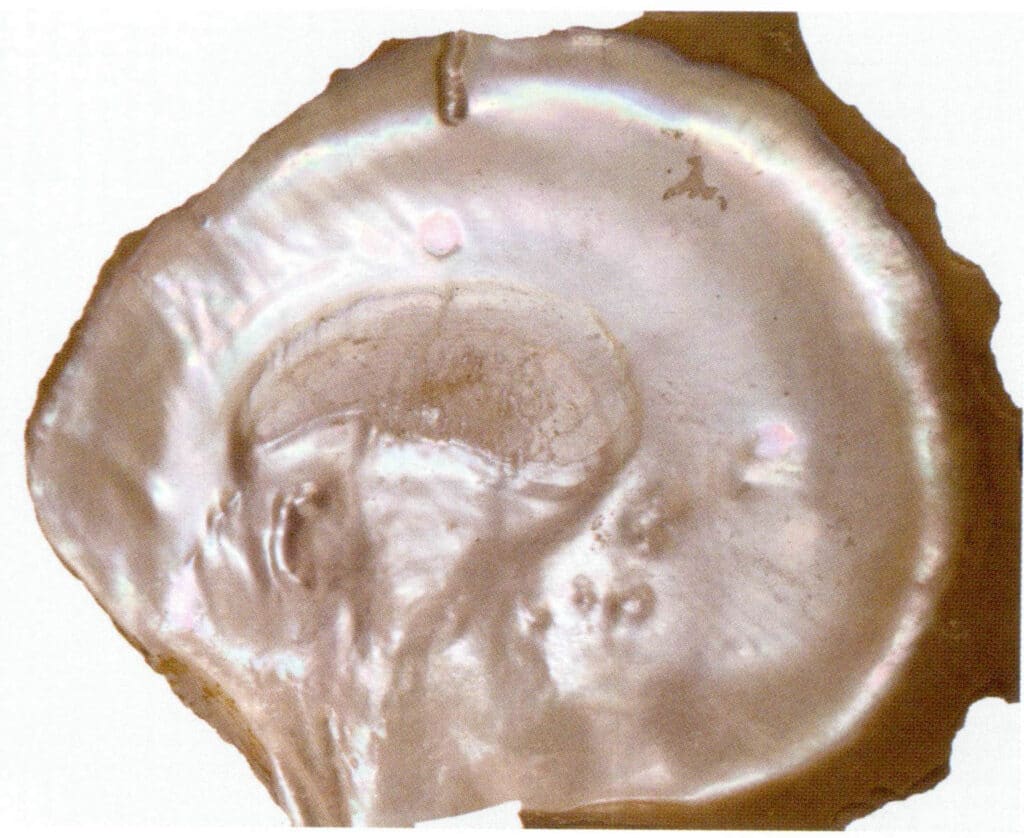
Figure 6-4-7 Inner side of the giant pearl oyster (gold-lipped oyster)
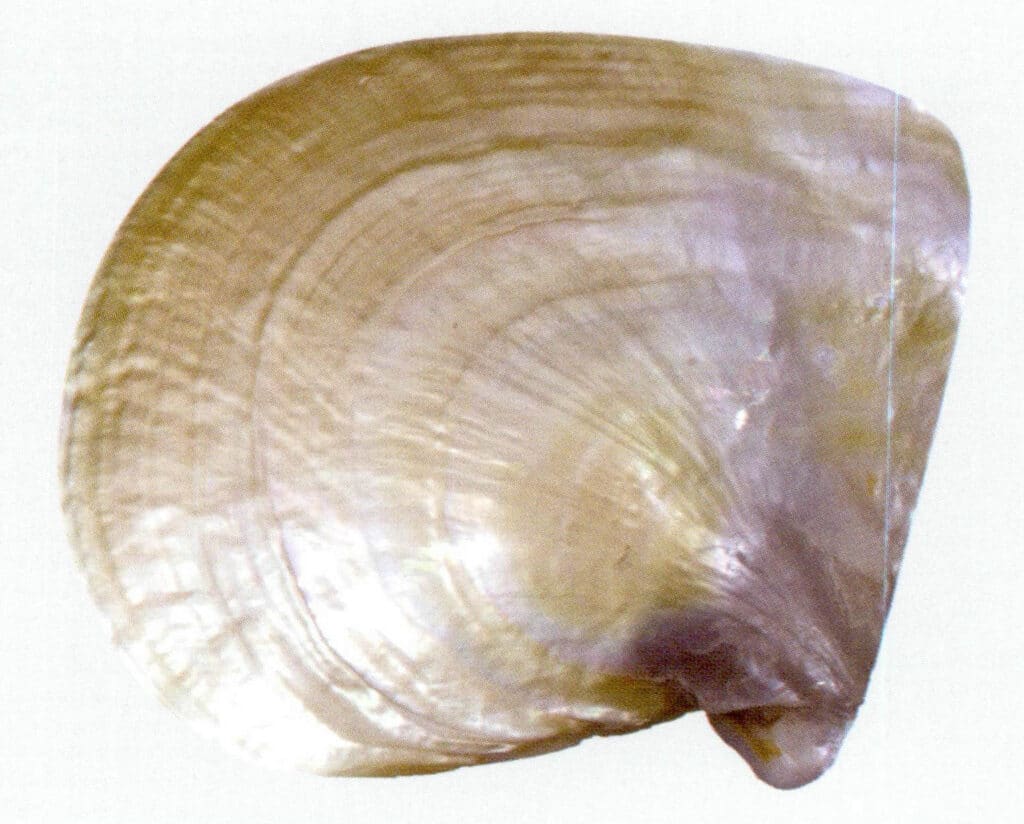
Figure 6-4-8 Polished outer side of the giant pearl oyster (gold-lipped oyster)

Figure 6-4-9 Polished inner side of the giant pearl oyster (gold-lipped oyster)
(3) Black-lip pearl oyster
The Black-lip pearl oyster is generally slightly smaller than the large pearl oyster, with an adult shell length of about 13 cm, a shell thickness of about 3 cm, and an irregular shape. The surface of the shell is black or dark brown, while the inner side has a pearlescent luster with strong iridescence. The Black-lip pearl oyster is shown in Figures 6-4-10 and 6-4-11.
It mainly inhabits the South Pacific, the Hawaiian Islands, and the Caribbean Sea.
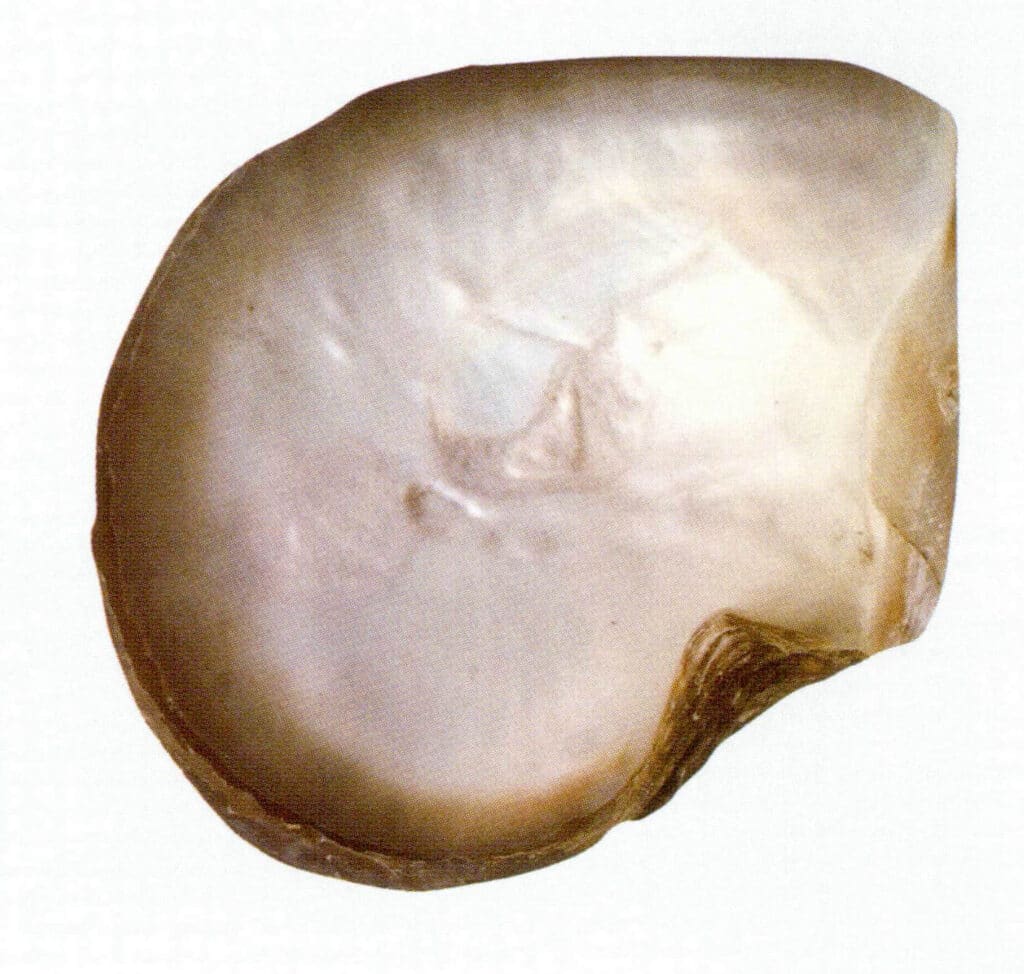
Figure 6-4-10 Black-lipped oyster (1)

Figure 6-4-11 Black-lipped oyster (2)
(4) Pteria Penguin
Adult Pteria Penguins can reach a length of 21 cm and a thickness of 4 cm, belonging to large mollusks. The shell is rectangular, with a black surface. The two shell halves are notably raised. The inner layer of the shell has a special luster, with a bronze color around the edges and silver-white in the center, exhibiting a strong iridescent effect. See Figure 6-4-12 and Figure 6-4-15 for Pteria Penguins.
Pteria Penguins are mainly distributed in Japan, Thailand, Indonesia, the Philippines, Australia, Malaysia, Madagascar, and other places; they are also found in the deep waters off the coast of Weizhou Island in Beihai, Guangxi, and along the coasts of Guangdong and Hainan in China.
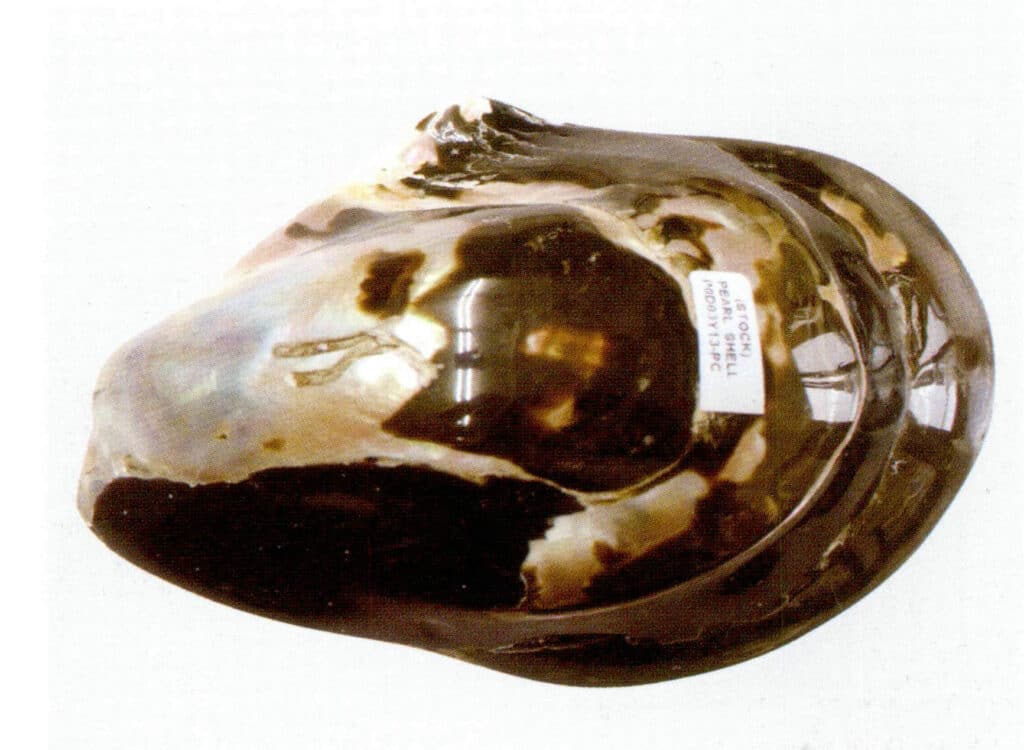
Figure 6-4-12 Polished outer side of the Pteria Penguins
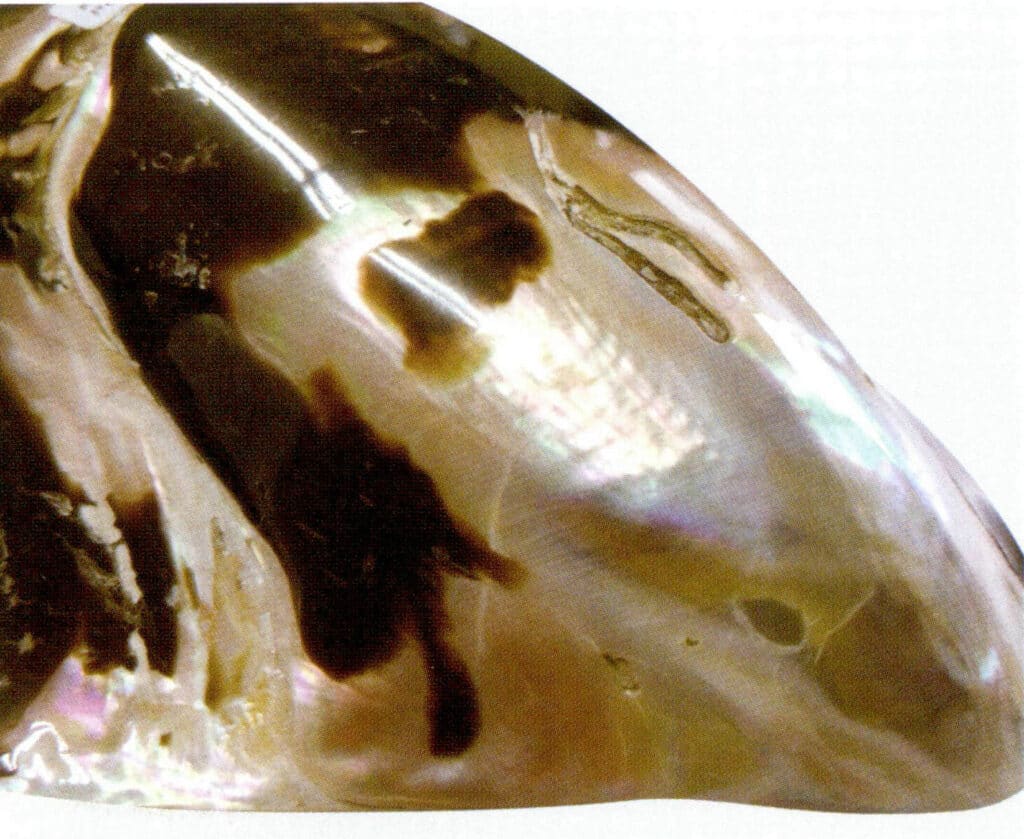
Figure 6-4-13 Polished outer side of the Pteria Penguins (partial)

Figure 6-4-14 Polished Pteria Penguins Inner Side
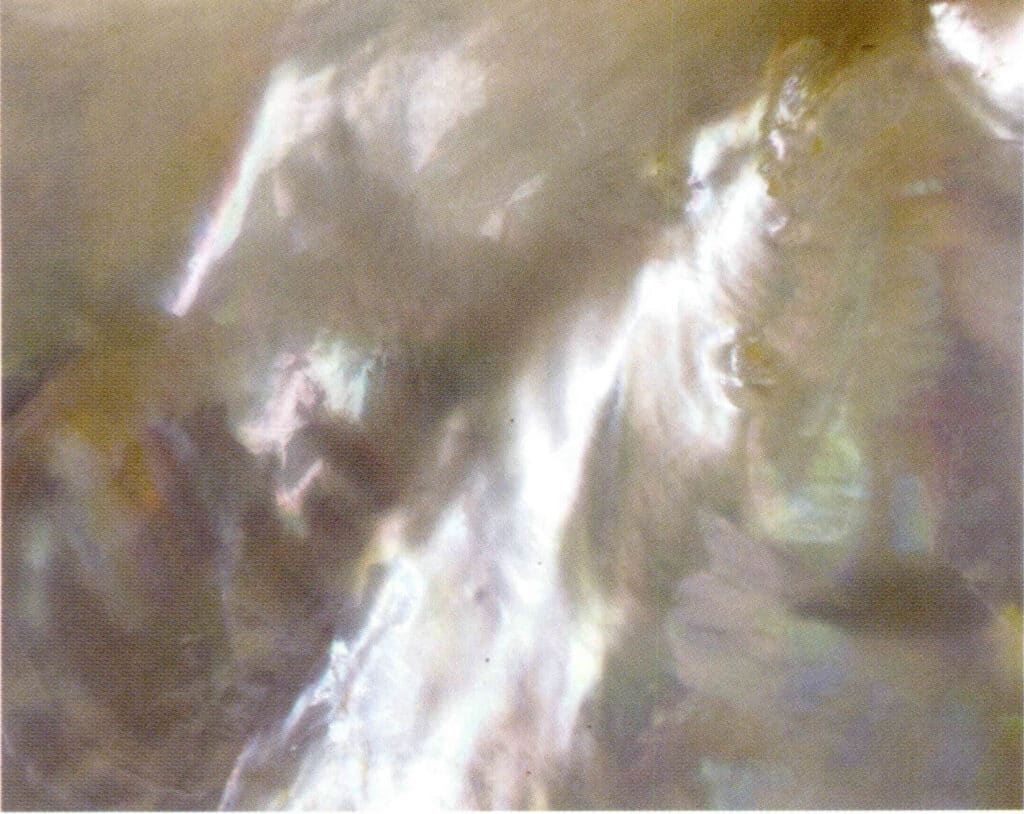
Figure 6-4-15 Iridescent Effect on the Inner Side of the Pteria Penguins.
(5) Triangle Shell mussel
The Triangle Shell mussel has an irregularly shaped triangular form, is large, flat, and thick, has a strong iridescent luster on the inner surface, and is pure white. The typical length of an adult shell is 12 -15 cm, and the thickness is about 3 cm. The Triangle Shell mussel is shown in Figures 6-4-16 and 6-4-17.
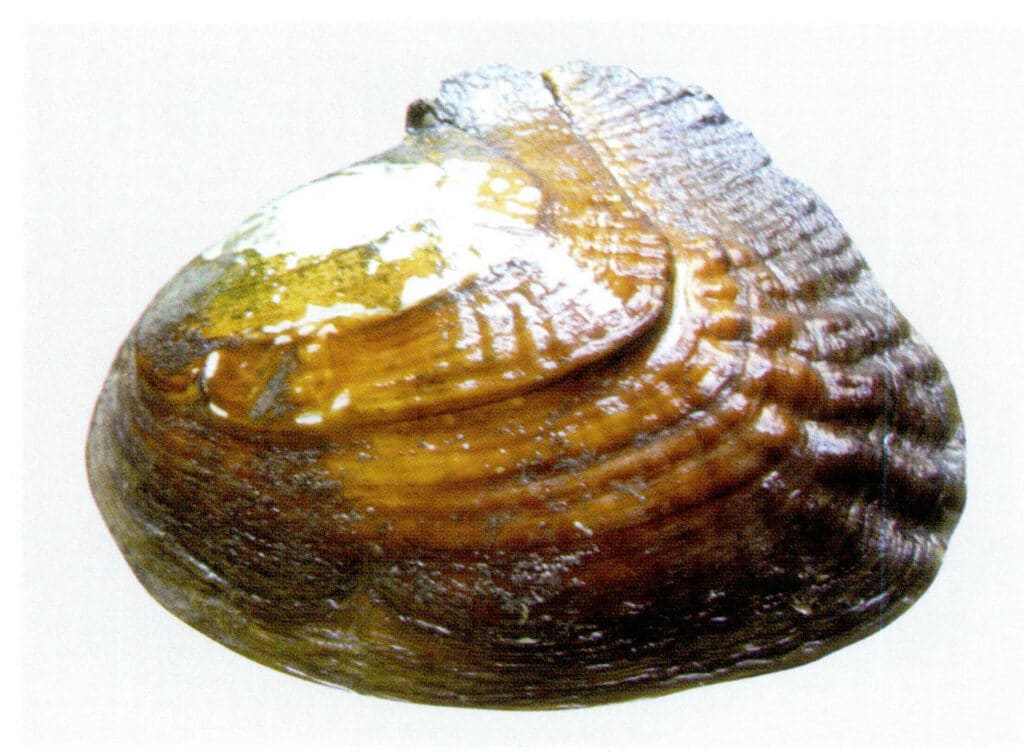
Figure 6-4-16 Outer Side of the Triangle Shell mussel Shell
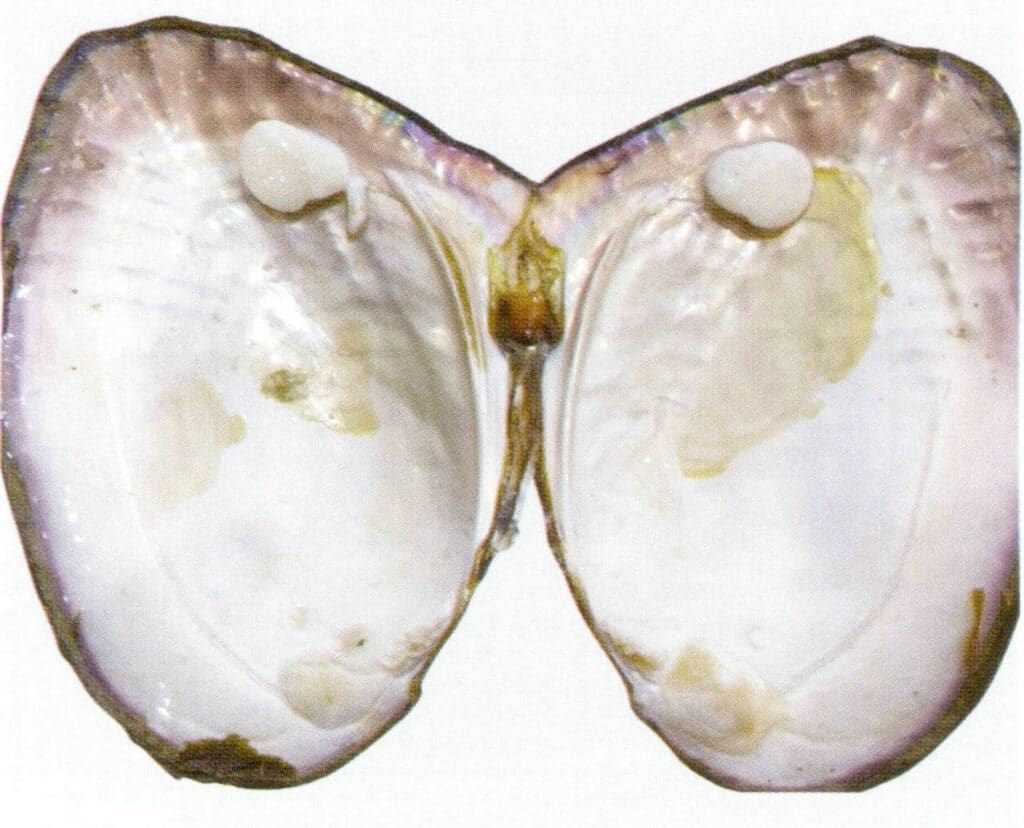
Figure 6-4-17 Inner Side of the Triangle Shell mussel Shell
Triangle Shell mussel is widely distributed in the lakes and rivers of the middle and lower reaches of the Yangtze River in China, and abroad mainly in Japan.
The main mineral phase of calcium carbonate on the inner and outer sides of freshwater clam shells is aragonite, and its XRD analysis can be seen in Figure 6-4-18

(6) Cockscomb pearl mussel
Cockscomb pearl mussel is thinner than the Triangle Shell mussel, with an expanded shape resembling an irregular triangle. The anterior dorsal edge is small and not prominent, while the posterior is long and high, extending upward to form a large crown. Each shell has a posterior tooth on the left and right sides. The shell can reach a maximum length of 19 cm, as seen in Figures 6-4-19 and 6-4-20. It is widely distributed in rivers and lakes in China’s middle and lower reaches of the Yangtze River.
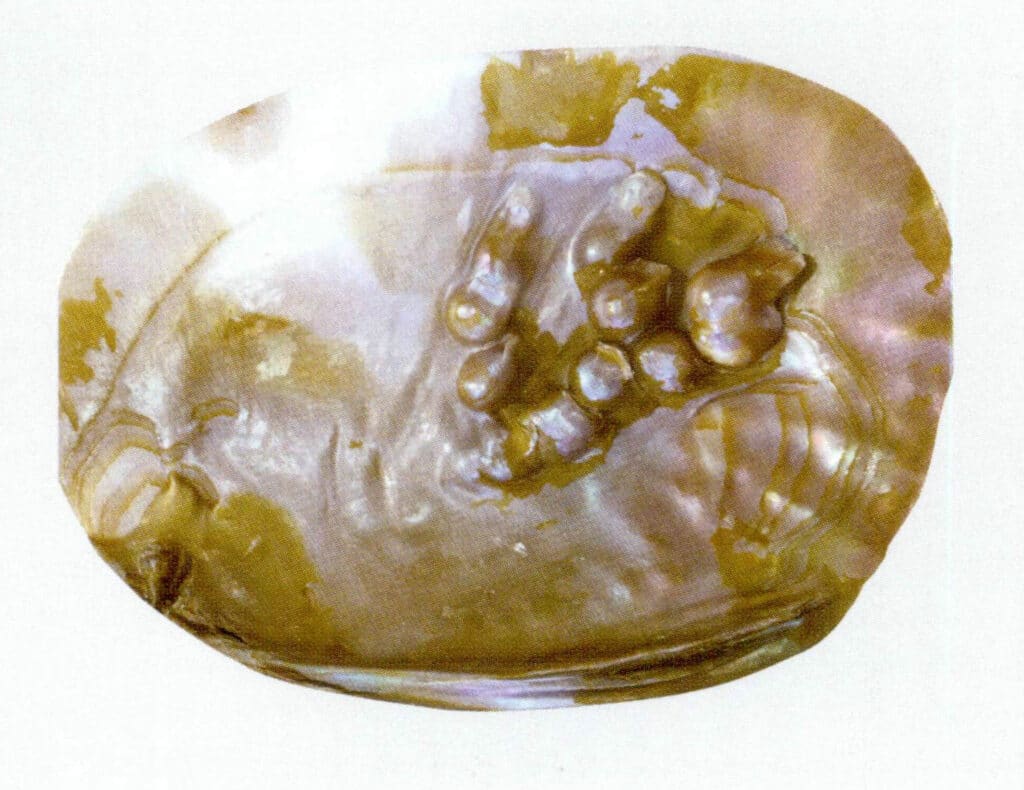
Figure 6-4-19 Cockscomb pearl mussel (1)
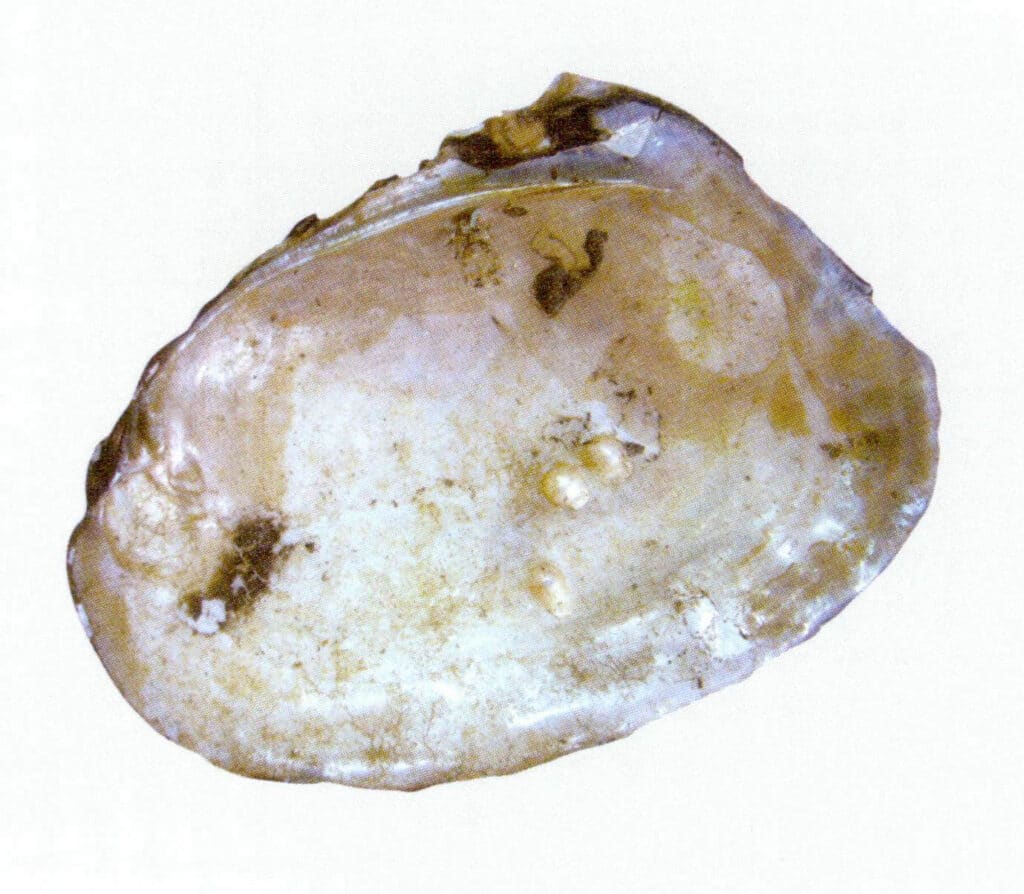
Figure 6-4-20 Cockscomb pearl mussel (2)
(7) Biwa pearly mussel
Biwa pearly mussel has characteristics such as large individual size, thick shells, and well-developed connective tissue in the outer mantle, as shown in Figure 6-4-21. The shell length of adult mussels is generally 10 -13 cm, and their lifespan exceeds ten years.
Biwa pearly mussel is a species unique to Japan, and it is found in Lake Biwa.
(8) Lamprotula leai
The Lamprotula leai is very thick and hard, making it an excellent material for making buttons and pearl nuclei. Its shape is elongated and oval. The front end is round and narrow, the back end is flat and long, the ventral margin is arched, the dorsal margin is nearly straight, and the back edge is slightly curved and protrudes at an angle. The shell apex is slightly higher than the dorsal margin, located at the very front of the dorsal margin; the shape of the shell varies greatly, with some having a short round front and others having a long front. The Lamprotula leai is shown in Figure 6-4-22.
The back-bulged beautiful mussel is widely distributed in rivers and lakes in China’s middle and lower reaches of the Yangtze River.

Figure 6-4-21 Biwa pearly mussel
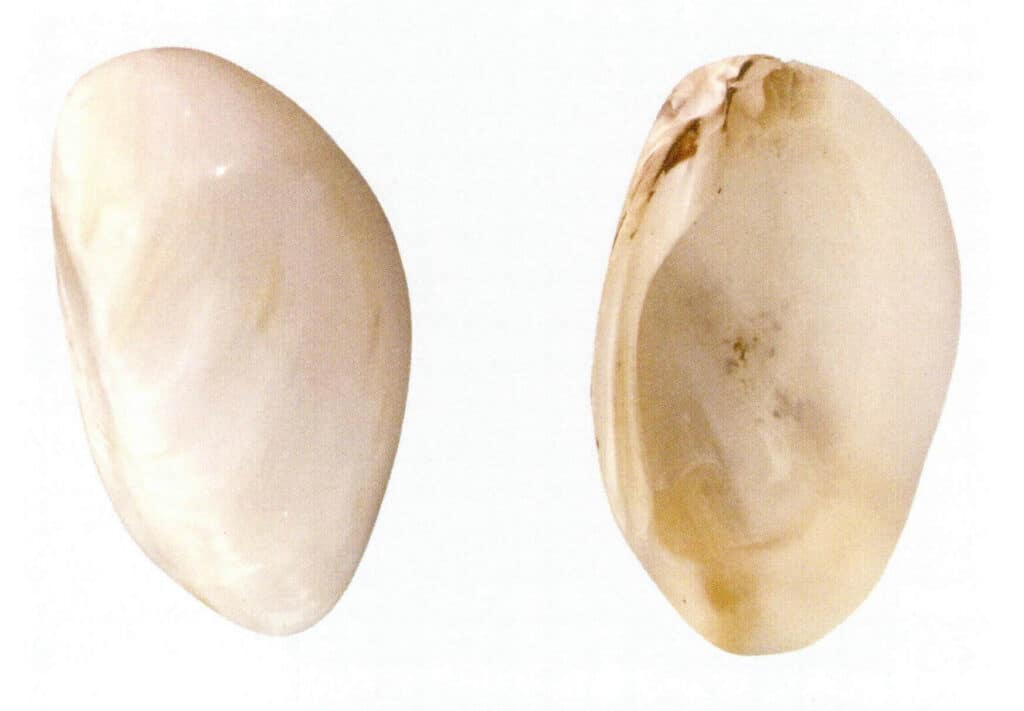
Figure 6-4-22 Lamprotula leai
4.2 Tridacna Shell
Tridacna is a type of deep-sea bivalve, generally of massive size, with two large shells. Tridacna shells can be used as gemstone materials, are one of the seven treasures in Buddhism, and are also one of the organic gemstones that people love.
The color of Tridacna shells is generally white, with a white and glossy interior, and a yellow-brown exterior, which can have yellow and white mixed. Tridacna shells are often polished into beads or made into carvings for sale in the market, see Figures 6-4-23 to 6-4-30.
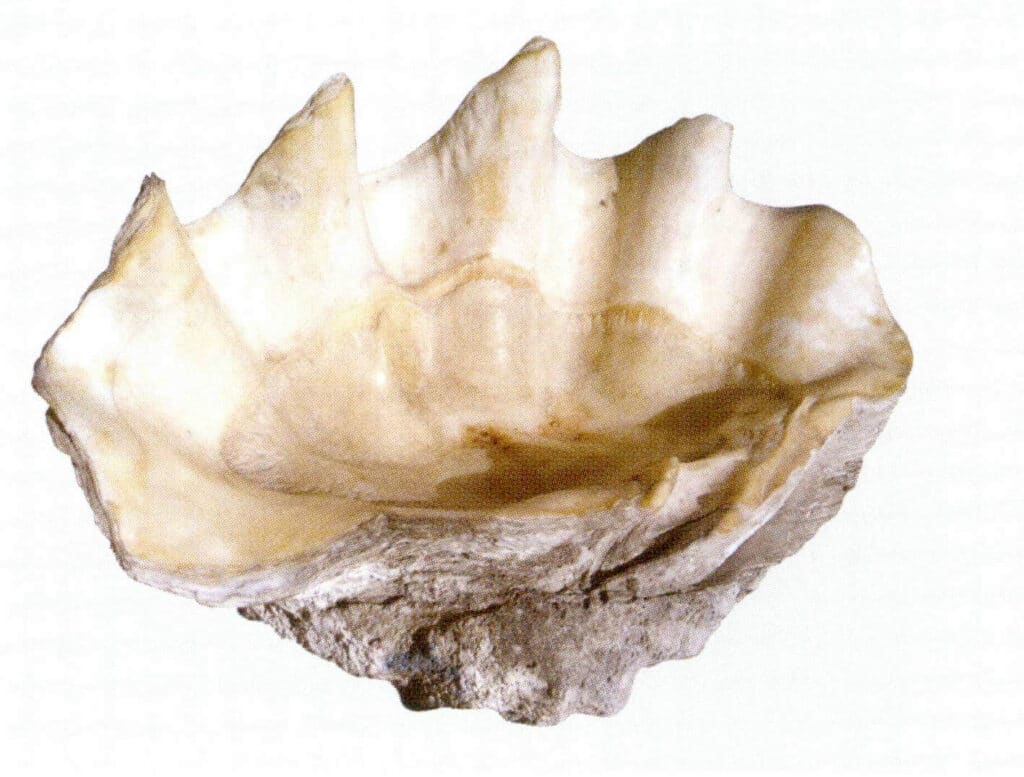
Figure 6-4-23 Tridacna Shell

Figure 6-4-24 Tridacna Shell

Figure 6-4-25 Layered growth structure and wormholes of Tridacna Shell
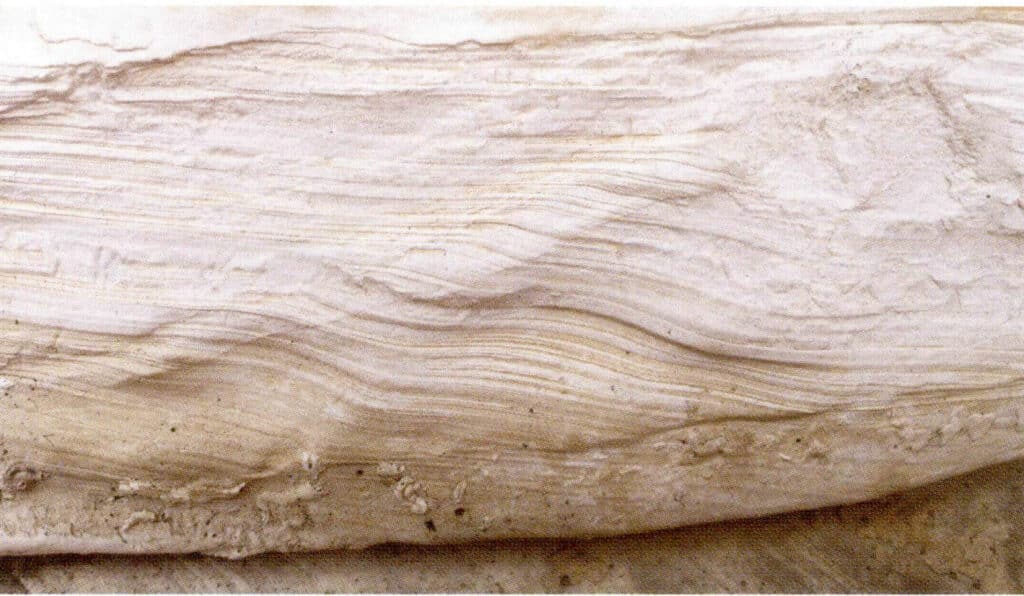
Figure 6-4-26 Layered growth structure of the Tridacna Shell

Figure 6-4-27 Layered and radial growth structure of Tridacna
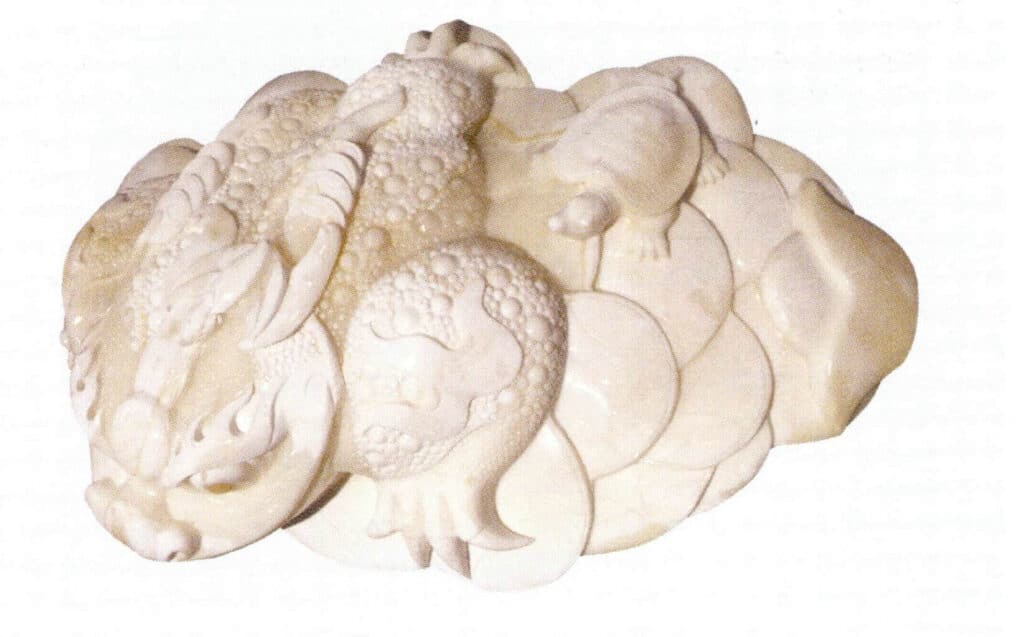
Figure 6-4-28 Tridacna Shell carving
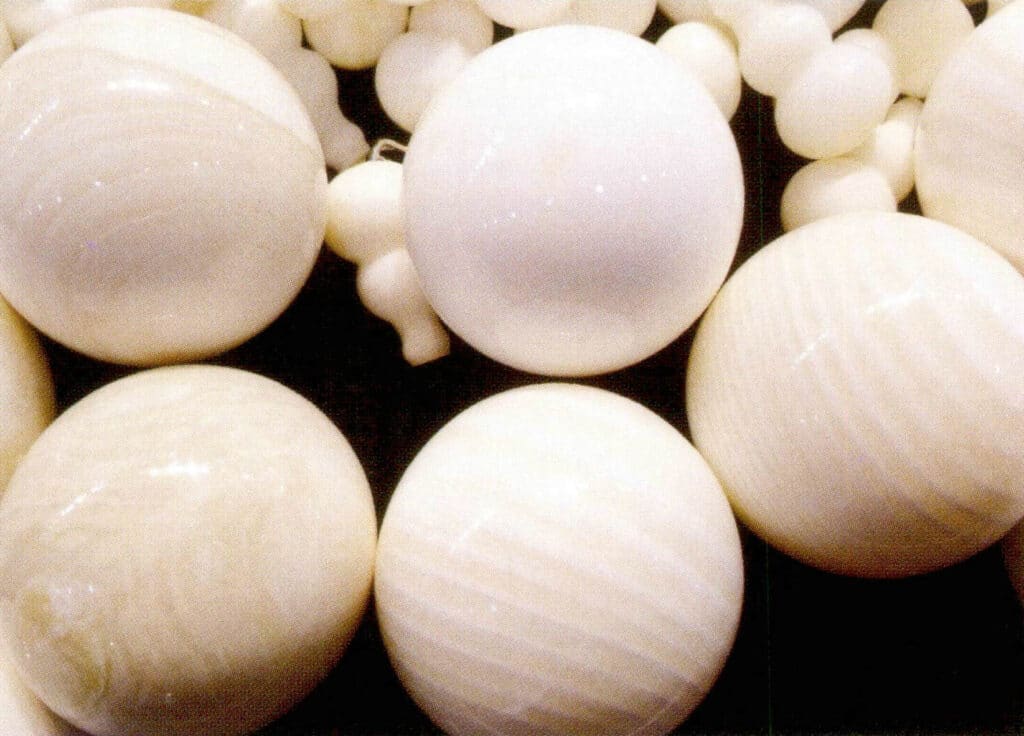
Figure 6-4-29 Tridacna Shell beads (I)
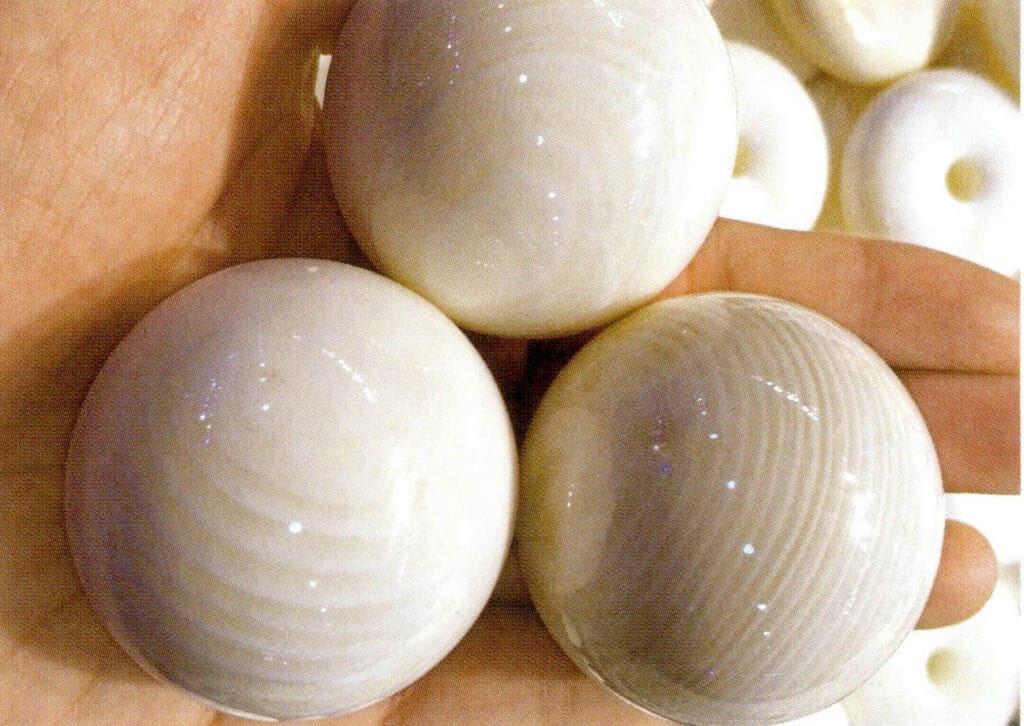
Figure 6-4-30 Tridacna Shell bead (II)
4.3 Abalone shell
The abalone has a hard single-walled shell, right-handed in shape, with a deep green-brown surface. The outermost layer of the abalone shell is a brownish-yellow organic keratin layer with uneven thickness, the thickest part being about 0.15mm; the middle layer is a prism layer arranged in an irregular columnar pattern, distributed vertically to the keratin layer; the inner layer is the nacre layer, distributed vertically to the prism layer, with a dense structure and strong iridescent effect. The abalone shell is shown in Figures 6-4-31 and 6-4-32.
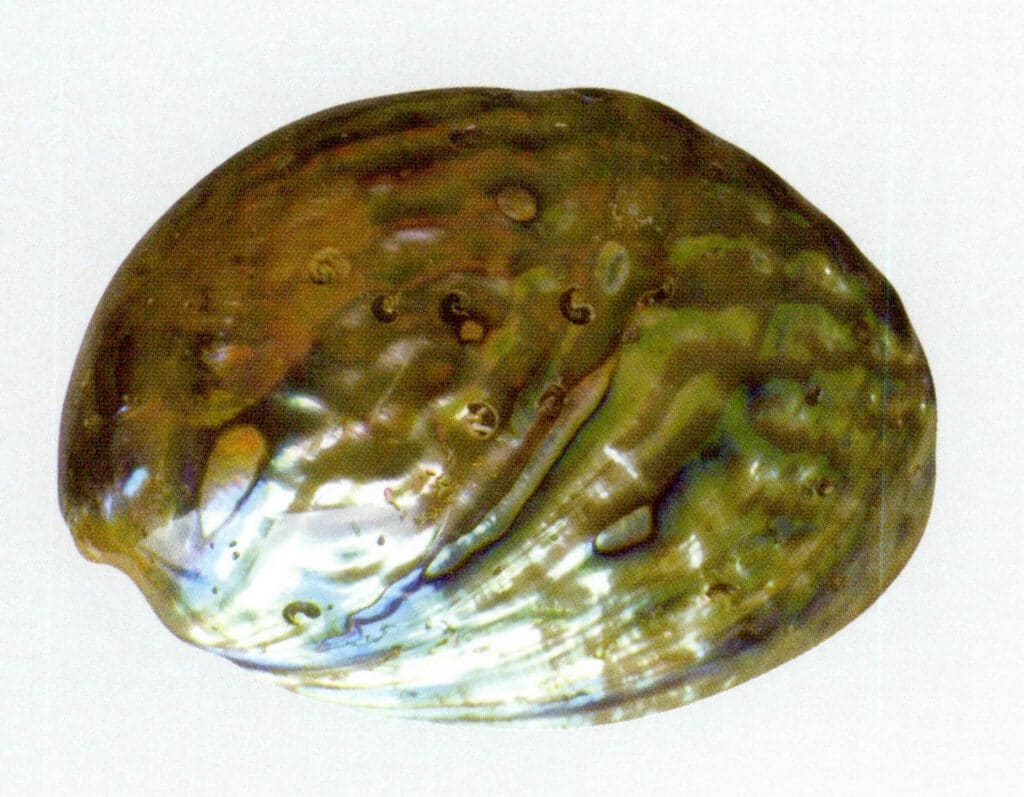
Figure 6-4-31 Outer side of the abalone shell

Figure 6-4-32 Inside of Abalone Shell
Abalone is widely distributed in all the world’s seas except for the east coast of North America and South America, with the greatest variety and quantity found along the Pacific coast and around some of its islands and reefs.
The shell layer of the abalone has hydrophobic properties, isolating the abalone from the external environment. It then nucleates and grows on the organic substrate secreted by the outer mantle, initially forming the prismatic layer in a stepwise manner. The nacre layer grows between the epithelial cell layer and the prismatic layer, with organic matter arranged approximately parallel to the epithelial cells dividing the growth space. Over time, aragonite crystals gradually fill the divided spaces, and organic matter is evenly distributed around the aragonite, resulting in a nacre layer with consistent height and thickness. The crystals continue to grow until all the crystals in the same layer connect with each other, filling the entire layer, at which point growth stops. Subsequently, a new layer of aragonite crystals begins to deposit and grow. This cycle repeats, forming the micro-layers of Nacre.
The nacre layer of the abalone shell is arranged in alternating parallel layers of inorganic aragonite and organic matter. When incident light enters the nacre layer, part of the light undergoes interference, while another part experiences multi-slit diffraction. The diffracted light waves can also interfere with each other. The interaction of interference and diffraction creates the radiance of the abalone shell. The iridescence of the abalone shell is shown in Figures 6-4-33 and 6-4-34.
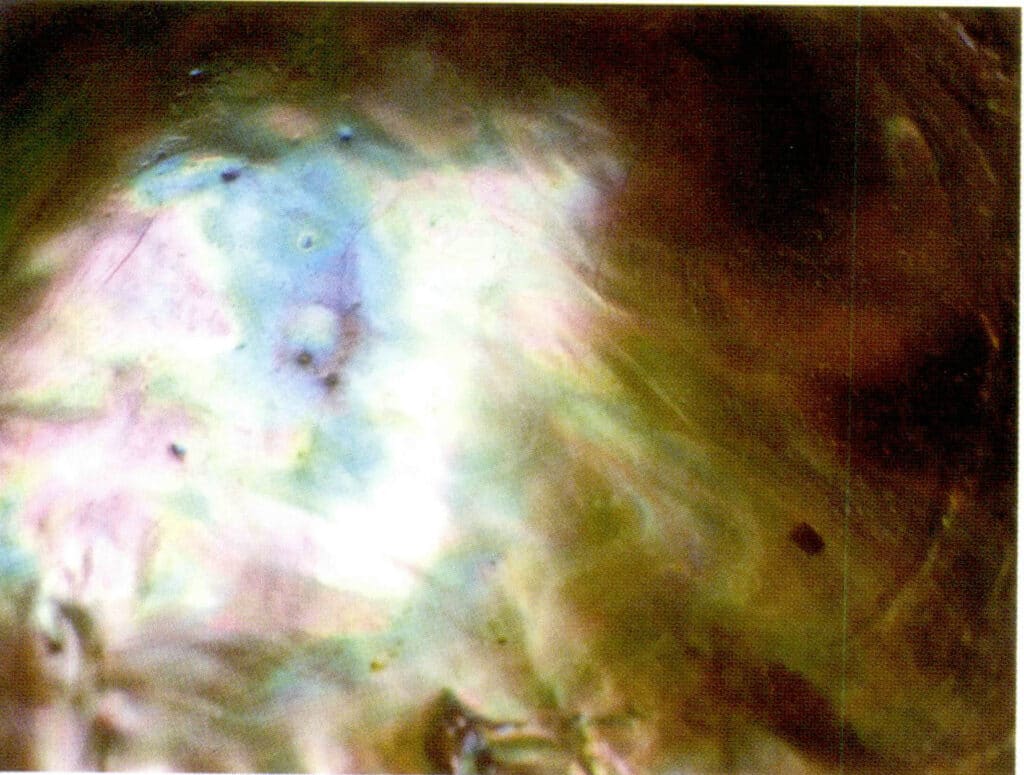
Figure 6-4-33 Strong iridescence of the abalone shell (I)
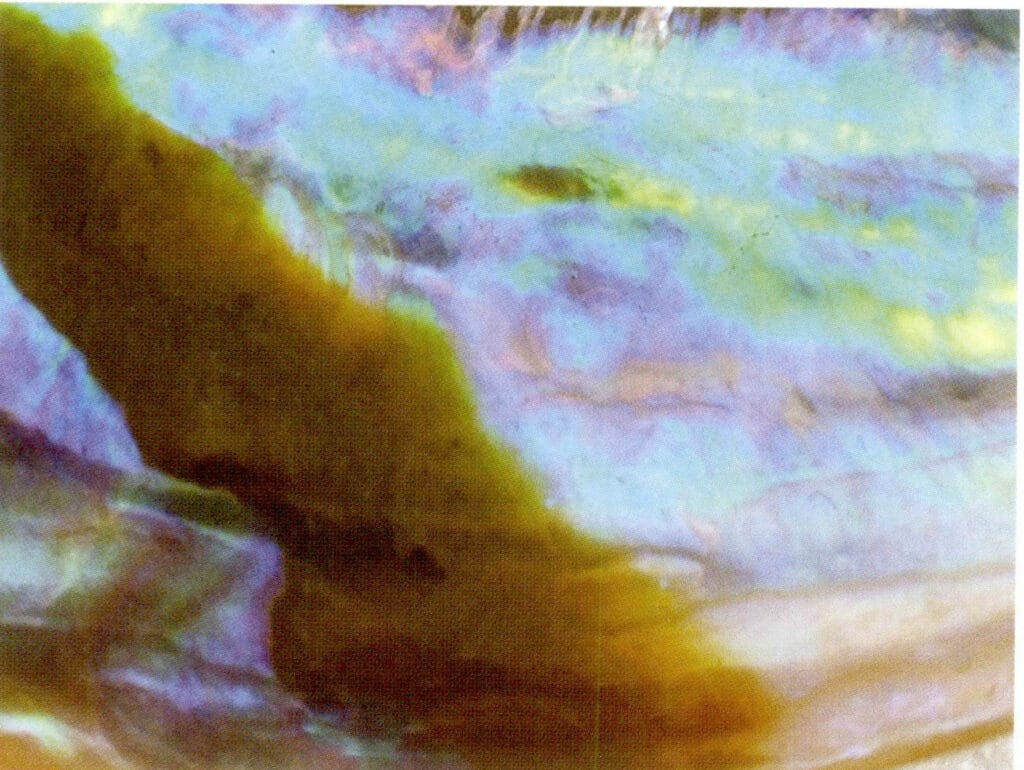
Figure 6-4-34 Strong Iridescence of Abalone Shell (II)
4.4 Queen Conch Shell
The Queen Conch, also known as the Phoenix Conch or the Queen Shell, has a thick shell, a thick and flared lip, and large, rounded tubercles on the whorls. It is mainly distributed in the Caribbean Sea and other regions. The Queen Conch shell is shown in Figures 6-4-35 to 6-4-40.
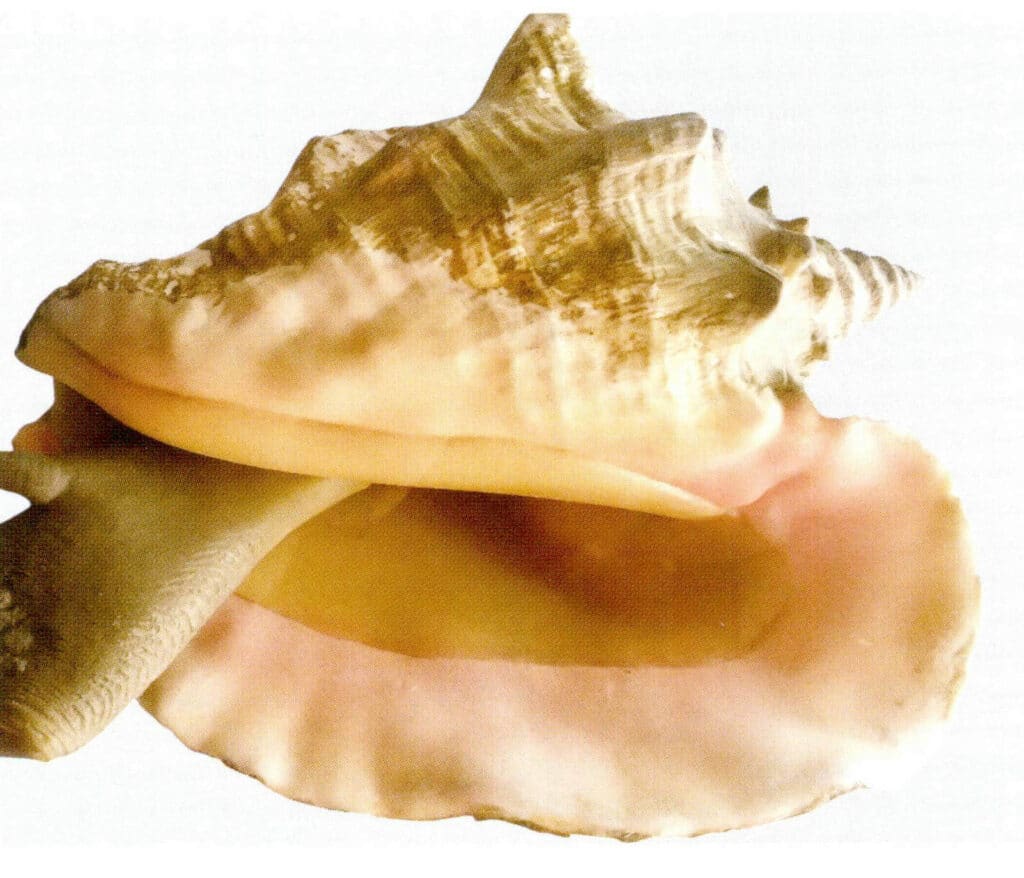
Figure 6-4-35 Queen Conch Shell (I)

Figure 6-4-36 Queen Conch Shell (II)

Figure 6-4-37 Partial of the Queen Conch Shell
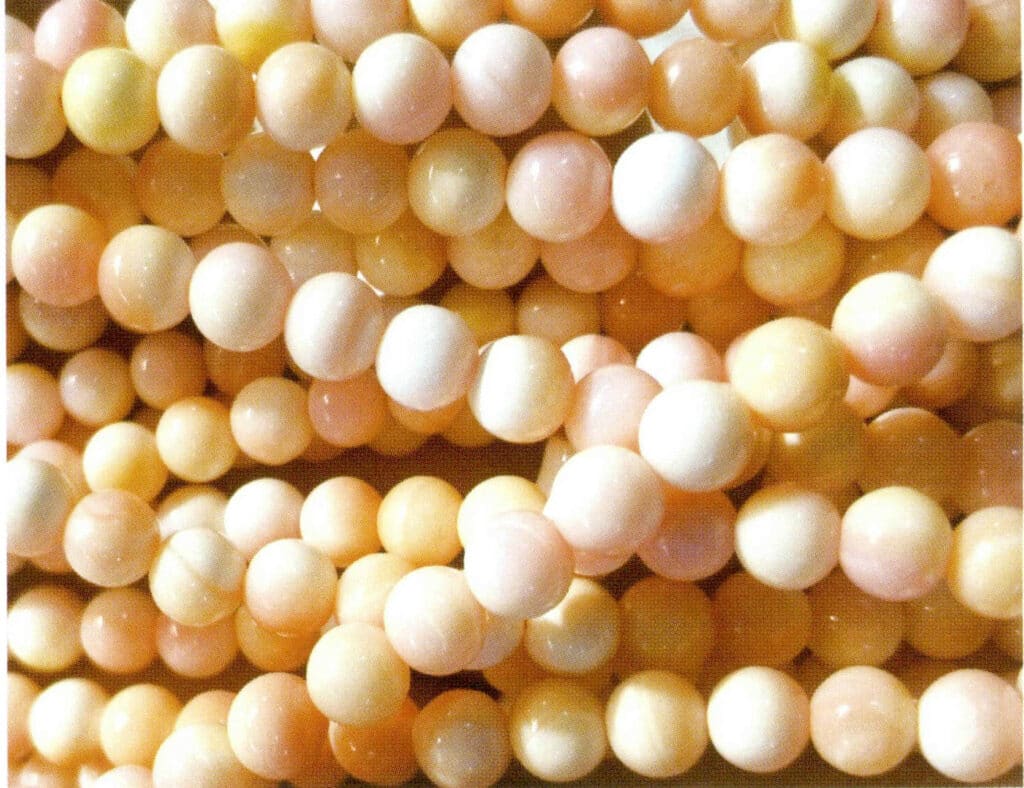
Figure 6-4-38 Queen Conch Shell Beads
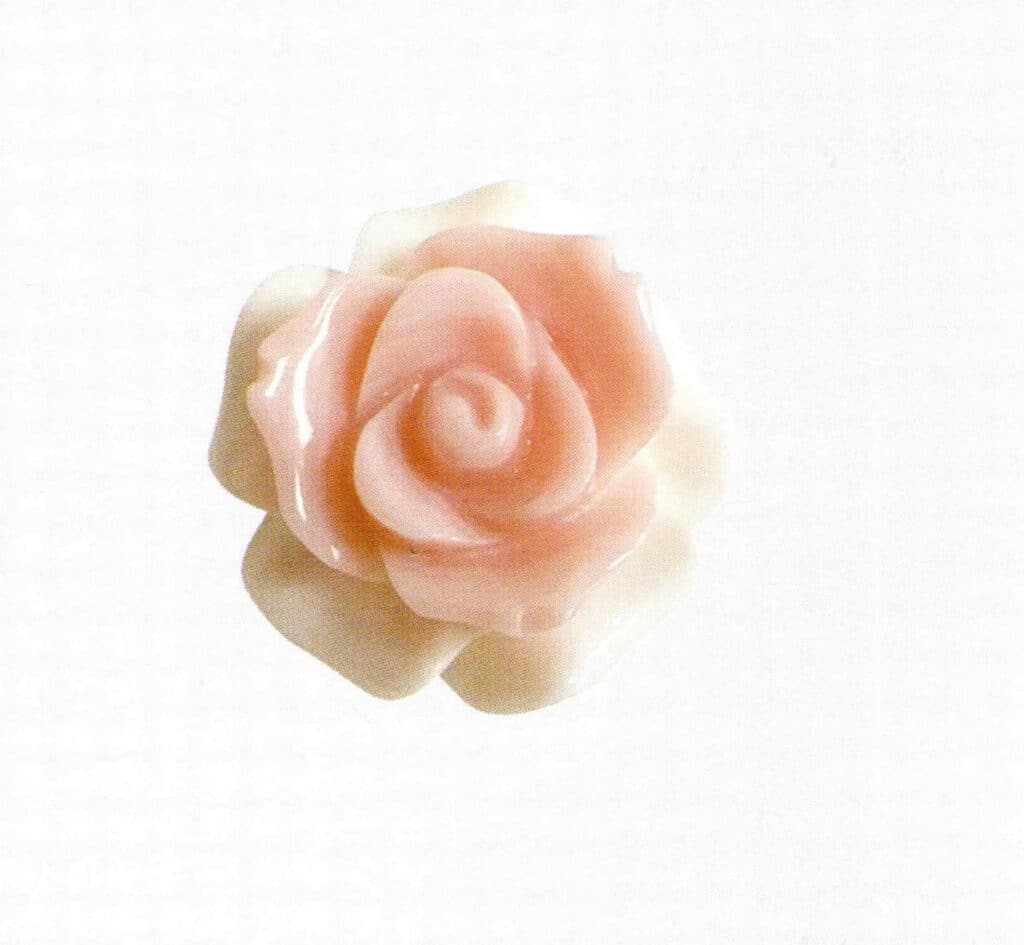
Figure 6-4-39 Queen Conch Shell Carving 1
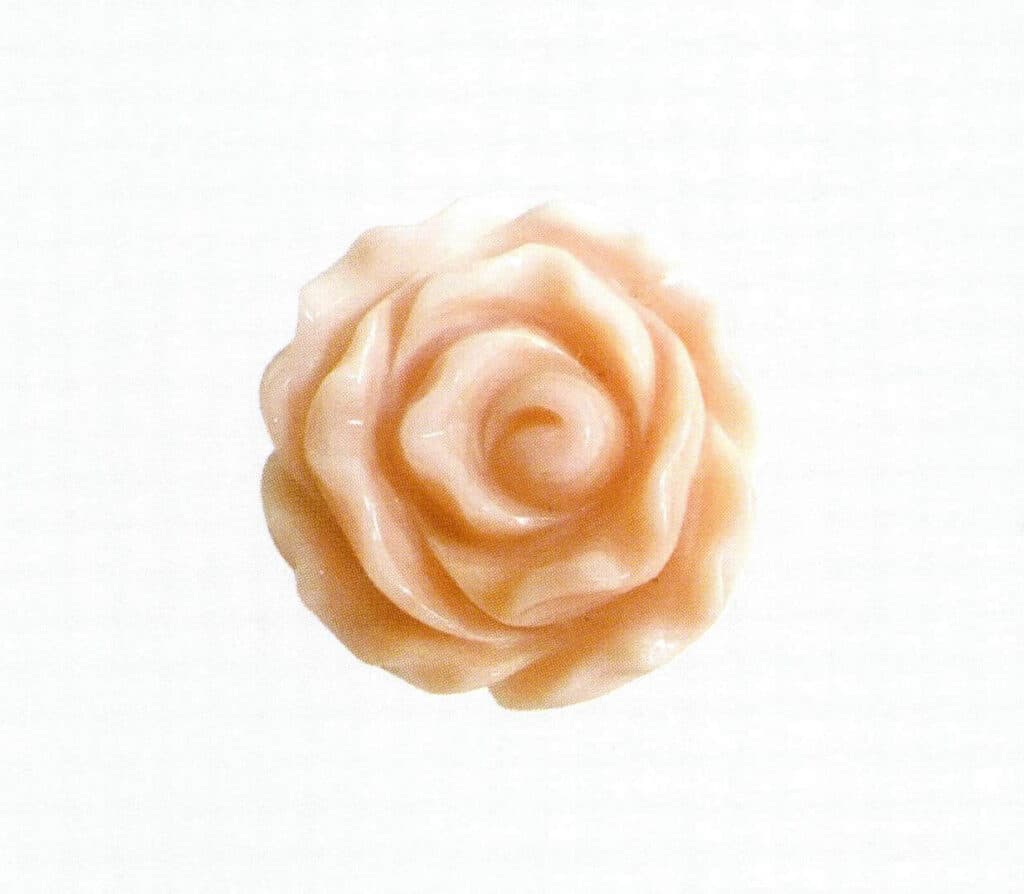
Figure 6-4-40 Queen Conch Shell Carving 2
5. Tanımlama
5.1 Optimization Processing
The most common optimization processes for shells are dyeing and assembly.
(1) Dyeing.
The most important identification feature of dyed shells is the appearance of abnormal colors concentrated in cracks and holes. Dyed shells are shown in Figures 6-5-1 and 6-5-2.
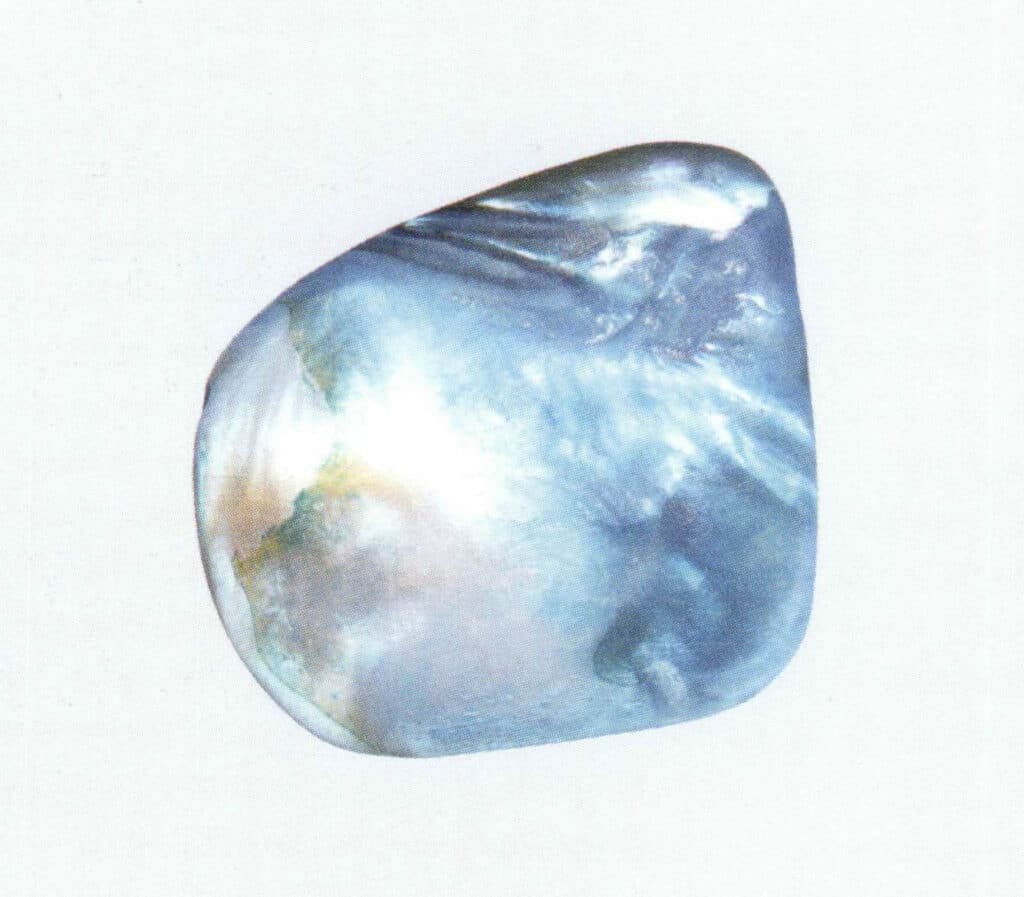
Figure 6-5-1 Dyed Mother-of-Pearl(1)
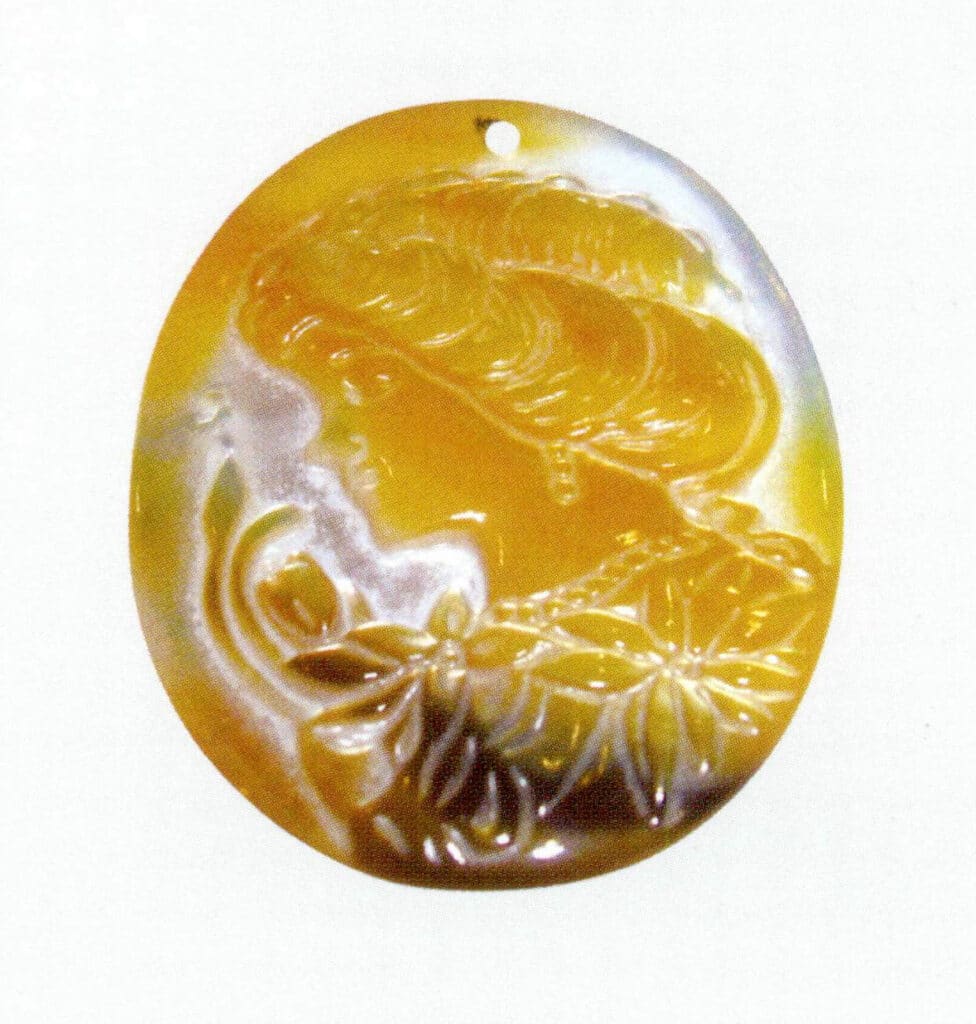
Figure 6-5-2 Dyed Mother-of-Pearl(2)
(2) Montaj
Assembled shells can be seen with gaps between small pieces, and adjacent shell pieces differ in color, luster, and radiance. Assembled shells are shown in Figures 6-5-3 to 6-5-6.

Figure 6-5-3 Assembled Abalone Shell 1
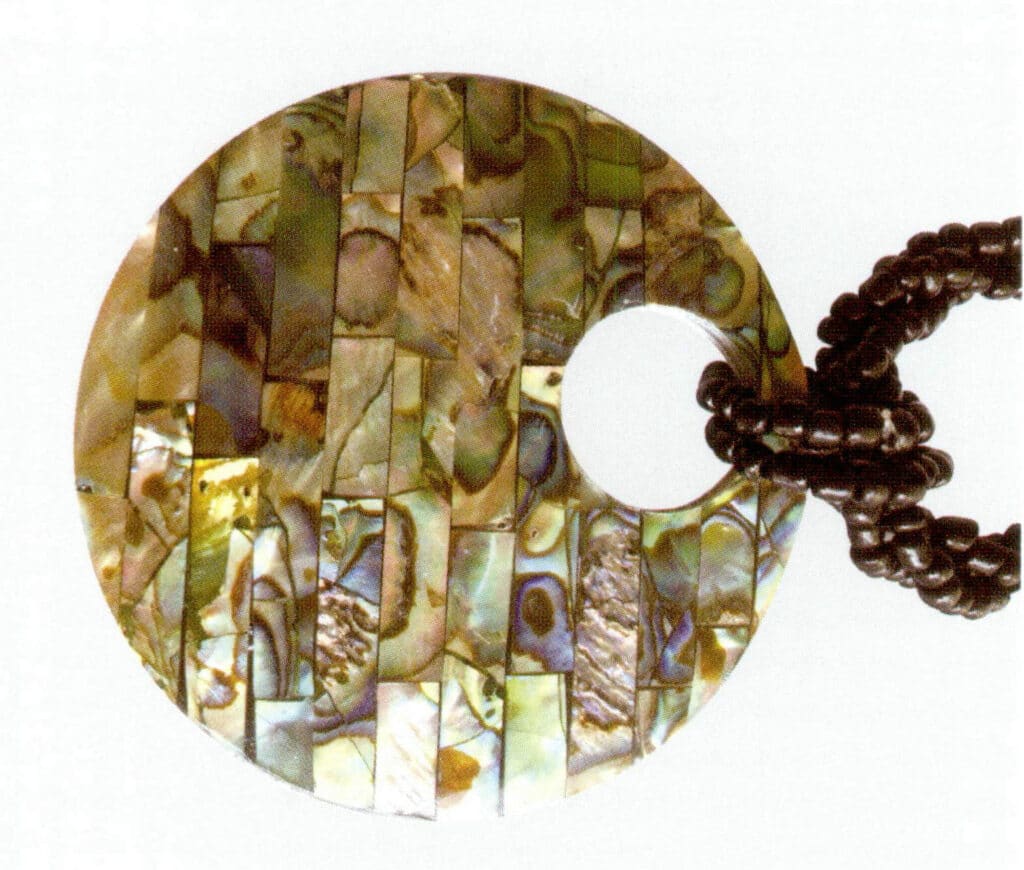
Şekil 6-5-4 Birleştirilmiş Abalone Kabuğu 2

Figure 6-5-5 Assembled Marine Mother-of-Pearl Shell

Figure 6-5-6 Assembled Freshwater Mother-of-Pearl Shell
5.2 Imitations
Imitations of shells are generally rare; occasionally, there are glass reliefs imitating shell reliefs, which are easy to identify.
The imitation of white Tridacna mainly consists of marble and other materials, which have significant differences in luster, texture, and layered structure compared to Tridacna, making them relatively easy to identify.
In addition, Tridacna also has a type known as ” Golden Tridacna ,” which is a mixed imitation of yellow and white. ” Golden Tridacna ” generally appears in yellow, white, or yellow-white mixed colors, with spiral patterns on the surface, resembling a Taiji diagram. Hence, it is marketed as Golden Tridacna . When ” Golden Tridacna ” first appeared on the market, it was referred to as “a fossilized Tridacna discovered in the Himalayas, yellow and white mixed, extremely rare.” After testing, it was found that ” Golden Tridacna ” is a dyed “Turbo” shell.
” Golden Tridacna ” can have a spiral tail shape and is often polished into a spherical shape; the colors are mainly a mix of white, yellow, brown, and green, with an overall spiral layered structure, and the surface color distribution is uneven. The measured refractive index is 1.56, and the relative density is about 2.85. The identification characteristics of ” Golden Tridacna ” can be found in Table 6-5-1, Figure 6-5-7, and Figure 6-5-8.
Table 6-5-1 Identification characteristics of ” Golden Tridacna “
| Shell species | Renk | Yapı | Mikroskobik gözlem | Ultraviyole floresan | Ultraviolet-visible absorption spectrum |
|---|---|---|---|---|---|
| Gastropod shells, rather than bivalves | Generally yellow and white interspersed, may have brown, with spiral patterns on the surface. | Spiral layered structure, not the parallel layered structure of nacre | Color distribution along the cracks | Yellow part has no fluorescence | Has a broad absorption band at 430 nm |
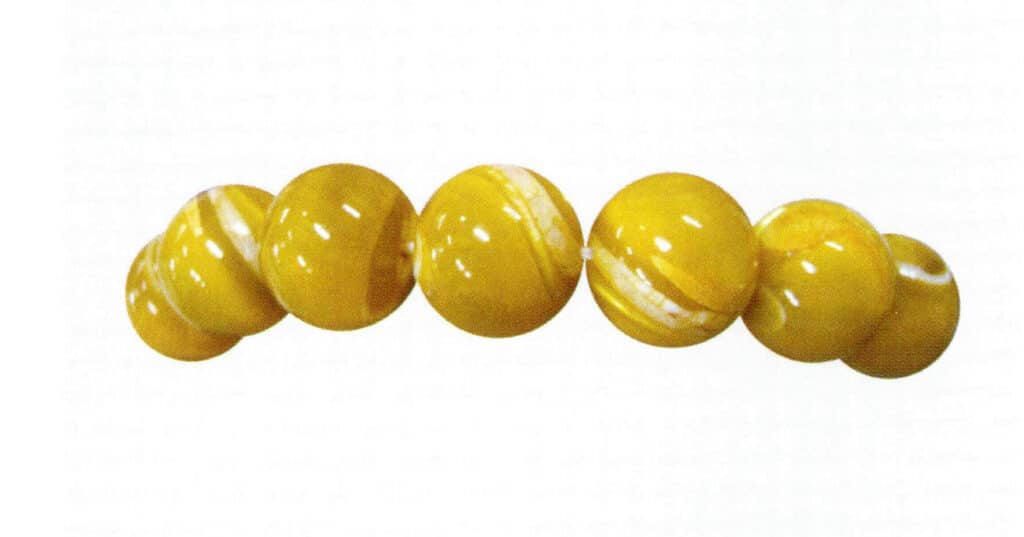
Figure 6-5-7 Golden Silk Tridacna (1)
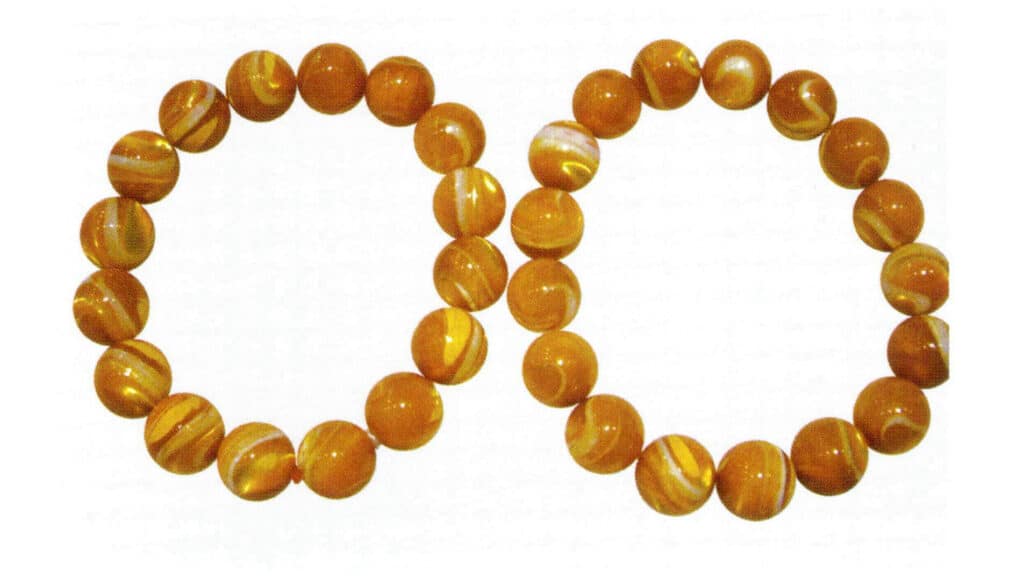
Figure 6-5-8 Golden Silk Tridacna (2)
6. Quality Evaluation
The quality evaluation of shells can be conducted from color, luster, thickness, size, and shape, see Table 6¬-6-1.
Table 6-6-1 Quality Evaluation of Shells
| Değerlendirme faktörleri | Kalite değerlendirme içeriği | |
|---|---|---|
| Renk | The Queen conch mollusk | A uniform and rich pink is best |
| Tridacna | Pure white, or with yellow "gold lines," is of the highest quality | |
| Mother-of-pearl and abalone shells | The more colors and effects, the better | |
| Parlaklık | The stronger the luster, the better | |
| Thickness | The thicker, the better; too thin is not conducive to processing and carving | |
| Individual size and shape | Complete shape, the larger the individual, the better | |
| Surface smoothness | The best quality is one that is flawless, smooth as a mirror, and can reflect images. | |
| İşleme teknolojisi | The best quality features innovative and unique shapes, beautifully designed styles, and excellent polishing and processing techniques | |
7. Maintenance
The composition and properties of shells, especially mother-of-pearl, are similar to those of pearls, and the maintenance methods are the same as for pearls.





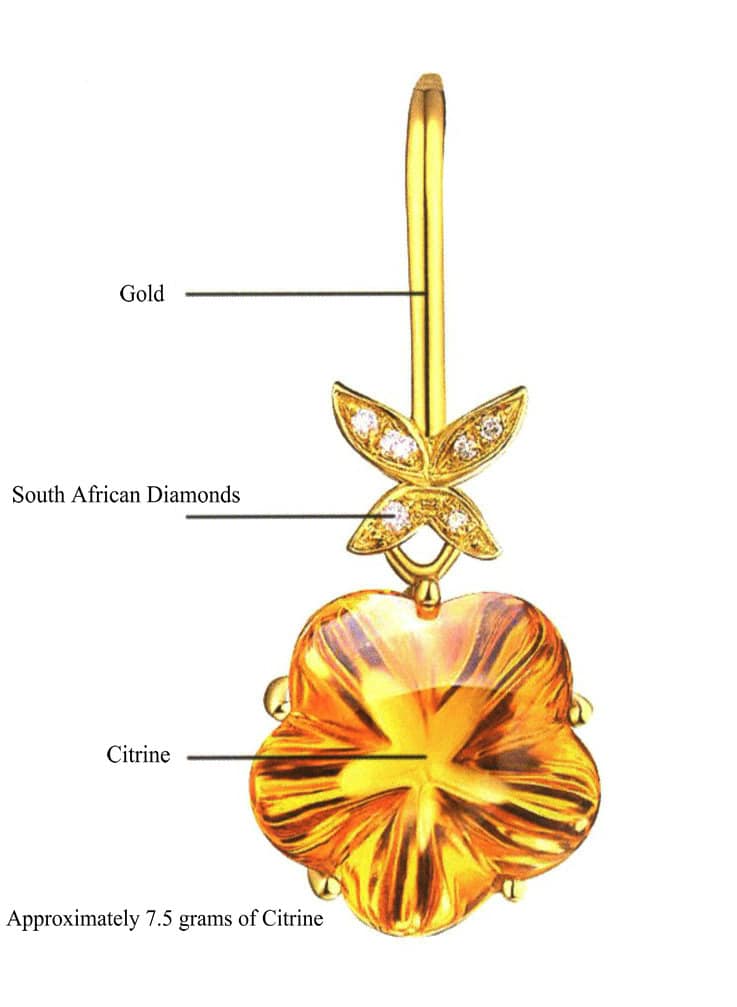


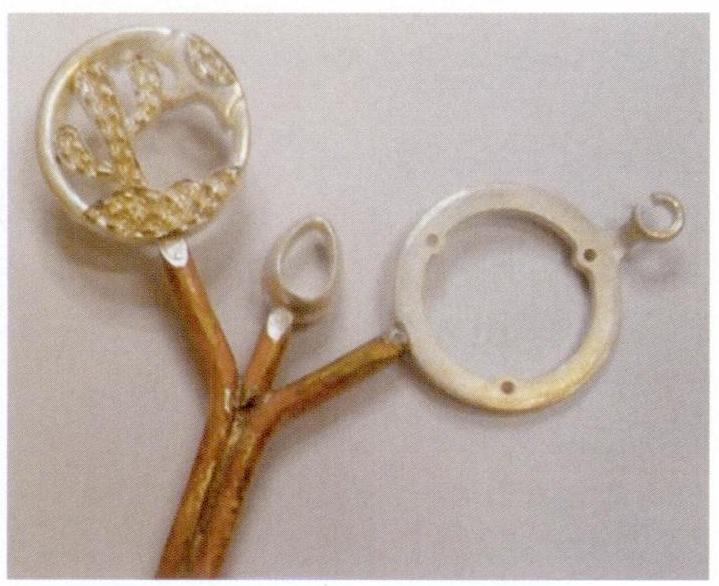
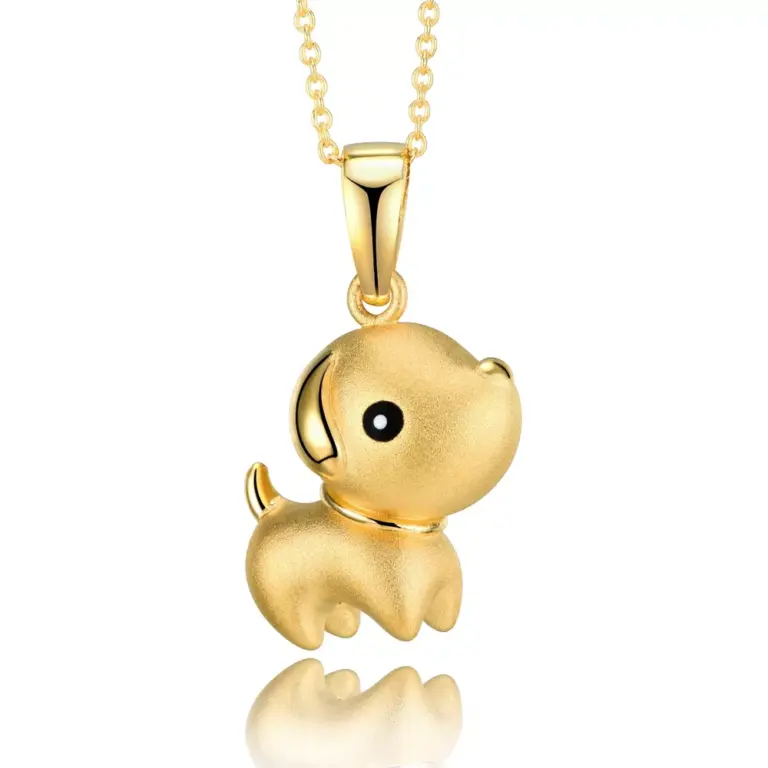
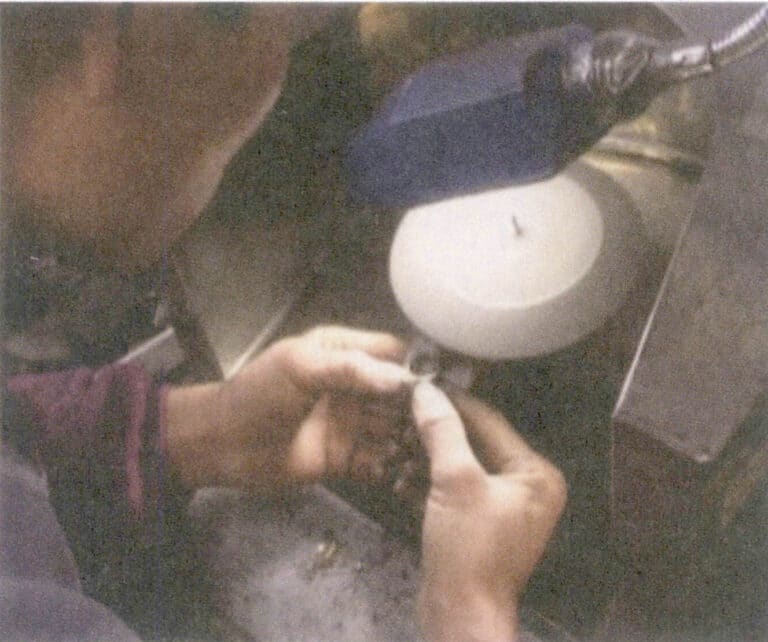
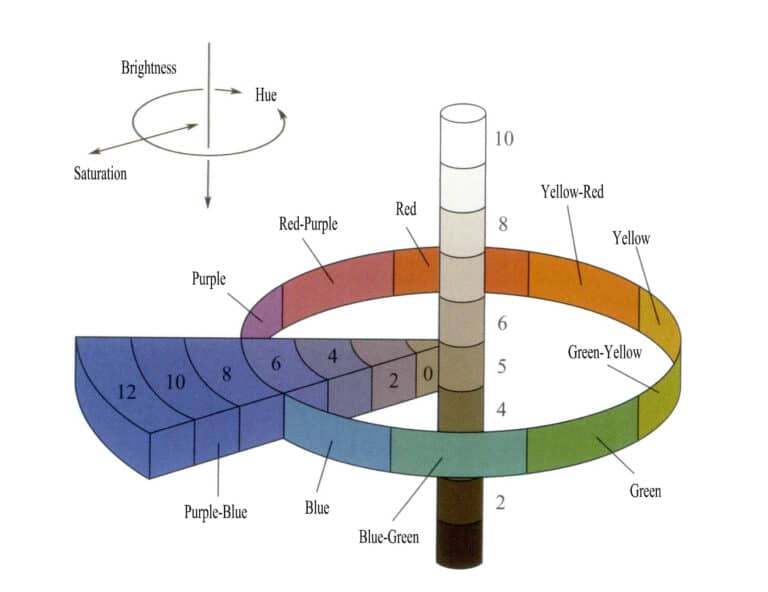





2 Yanıt
Bom dia!
Parabéns pela explanação!
Muito boa!
Sou leiga no assunto!
Mas estou apaixonada pela contas de corais rosa e concha da rainha!
Deus te abençoe!
Sucesso!
Infelizmente não tenho joalheria nem sei fazer nada disso!
Faço umas bijuterias pra mim!
we can make jewelry for you. you can focus on jewelry designing work